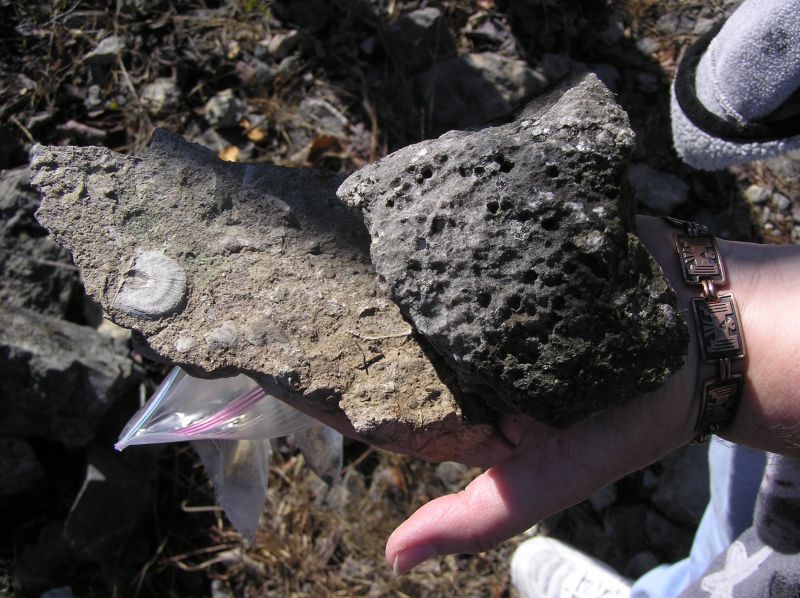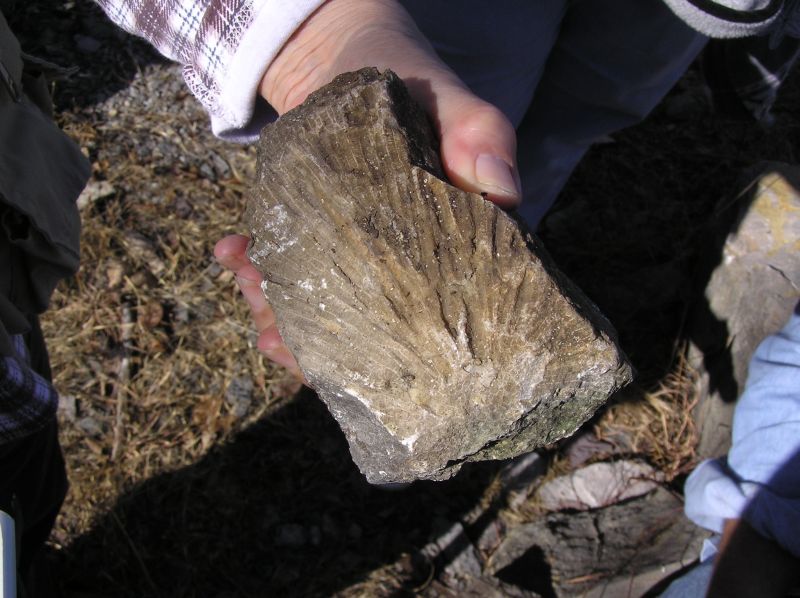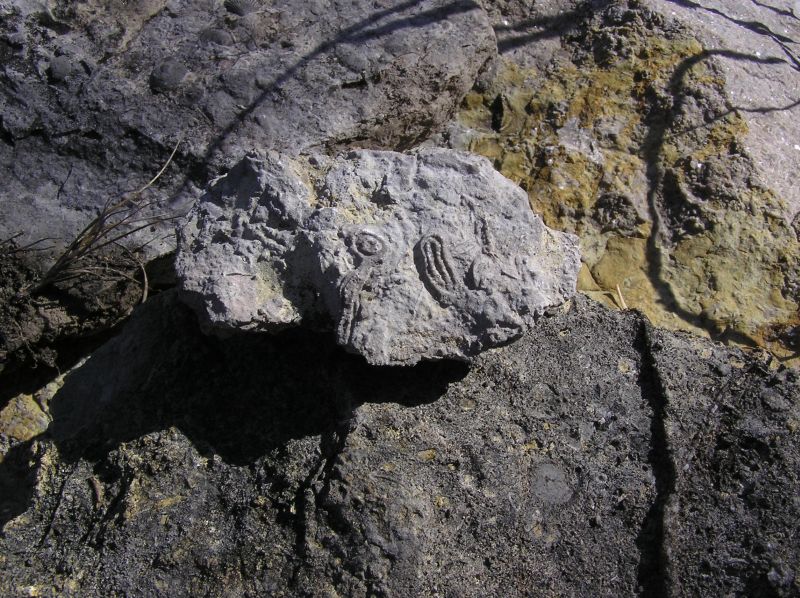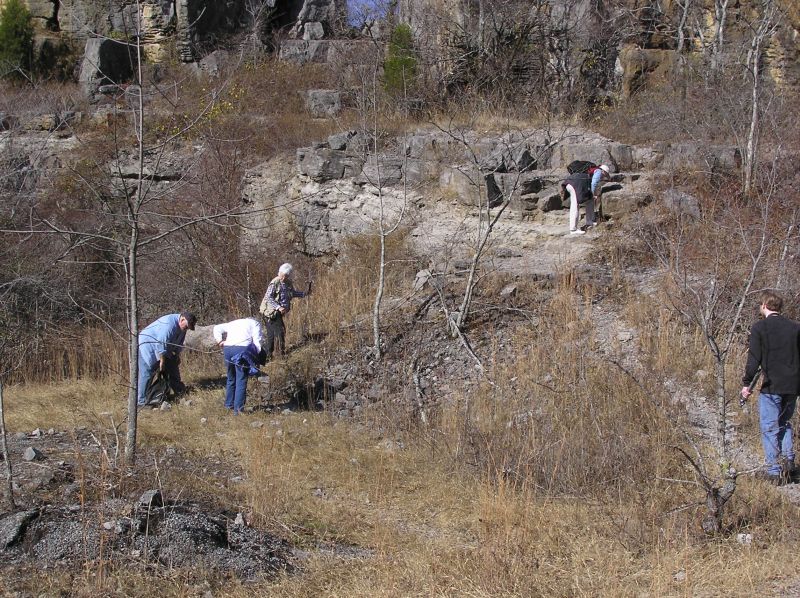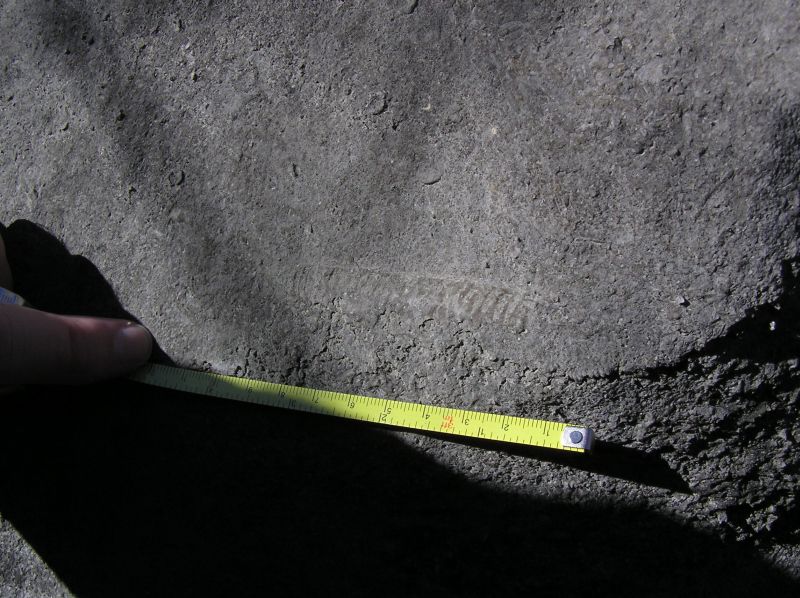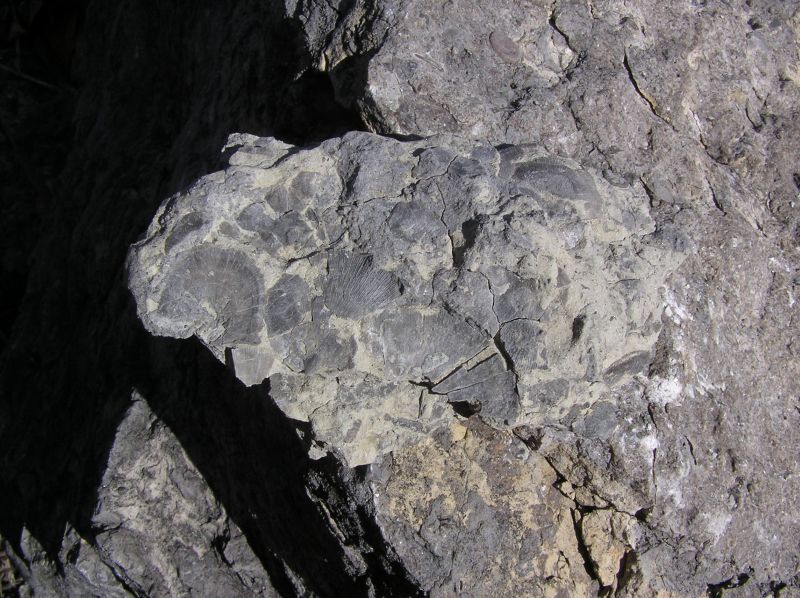07_08_cl_fossils445
Miscellaneous fossils found by Leisa.
Miscellaneous fossils found by Leisa.
Stigmaria, the root system of a lycopod such as Lepidodendron or Sigillaria.
BPS members listening to lecture on mining operations in the area.
Stigmaria, the root system of a lycopod such as Lepidodendron or Sigillaria.
A trip to a non-working mine site to explore spoil piles for invertebrate fossils was on the menu for BPS's August field trip. The mining company, headquartered in Tuscaloosa county generously offered us the opportunity to explore at this site. A long, hot day on a moonscape was nevertheless a great trip, yielding some beautiful specimens.
We met with the mining engineer who gave us a quick overview of the mining operations, then let us go onto the piles to do our hunting. We hunted until the heat got to us and it was time to seek air-conditioning.
After cooling off at a Mexican restaurant, we ended the day at the Museum of Natural History at Tuscaloosa with a visit to their superb collections.
(photos courtesy Chris and Vicki Lais)
Once again, the word, "intrepid" comes to mind when BPS makes a midwinter trip! With the temps in the upper 30's and low 40's and 15-20 mph winds, it was a toss up as to which trip to this site was the coldest! In spite of the weather, around 23 fossil seekers came for the fun. Our first stop was under sunny skys and slight winds which brought the temperature up to a bearable level. This is a great site, featuring a prehistoric coral reef that always has excellent specimens washed out during the previous year. It's always a temptation go after the big boulders, but they're much larger than they look (like iceburgs) so we can only stand and drool and capture them on camera. At the first stop on the lake numerous specimens of blastoids, archimedes, and crinoid stems were found, and a very nice piece of petrified/ permineralized wood. Next we went to the other side of the lake where it was downright windy and bitter cold. More crinoid stems, straight cephalapods, and some unknown specimens were collected as well as great slabs of fossil hash. These make great teaching tools as well as attractive showpieces. We were also treated to the sight of Bill "walking on water!" Next we stopped at a roadcut which yielded a few more nice specimens, and a lot more icy wind. After one last site check, hunger was the issue, so most of the group organized to follow Greg, who always seems to know the best places to chow down, to a long enjoyable evening meal at a "secret" local steak house, After a great time of good food, rehashing the day and catching up, tired BPS members headed home.
--Edited by Vicki Lais
(Photos courtesy Jan Novak, Bill Fowler, Chris Lais, & Vicki Lais)
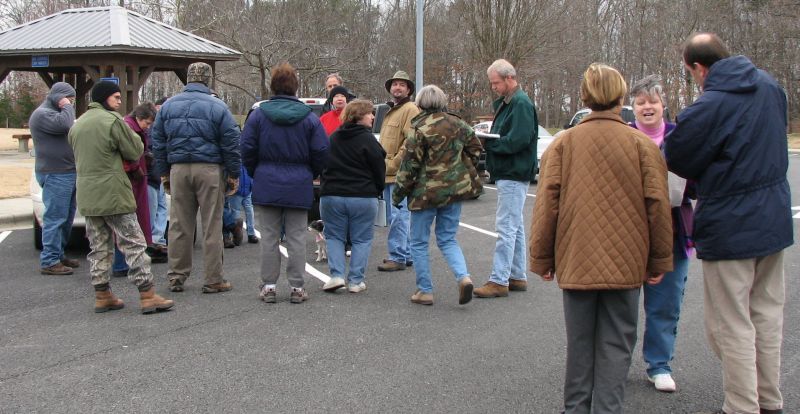
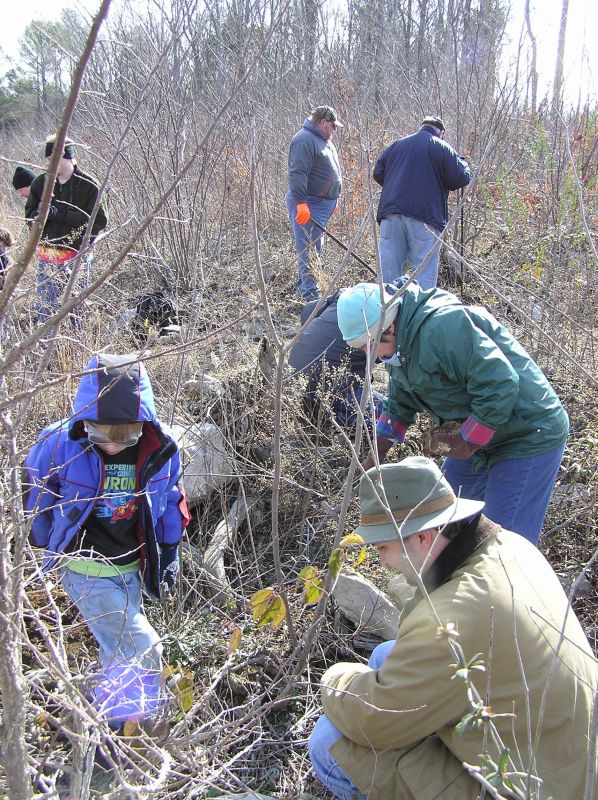
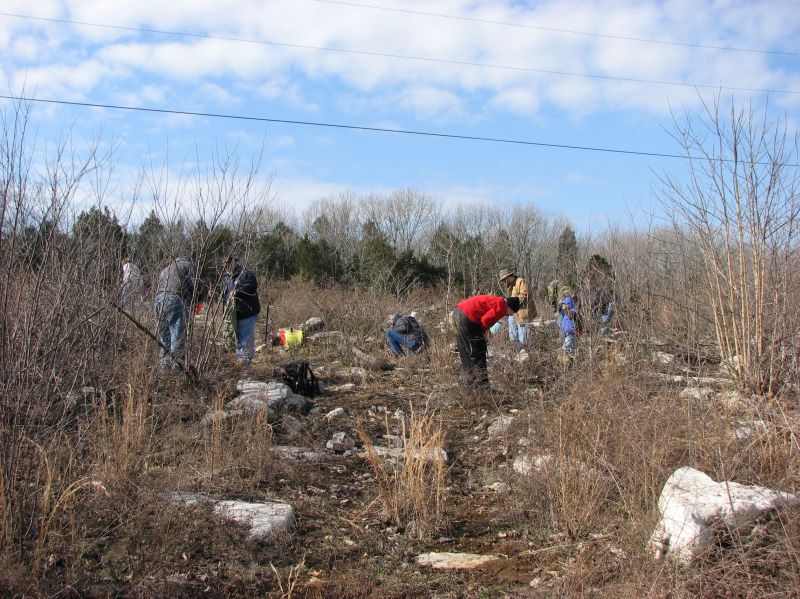
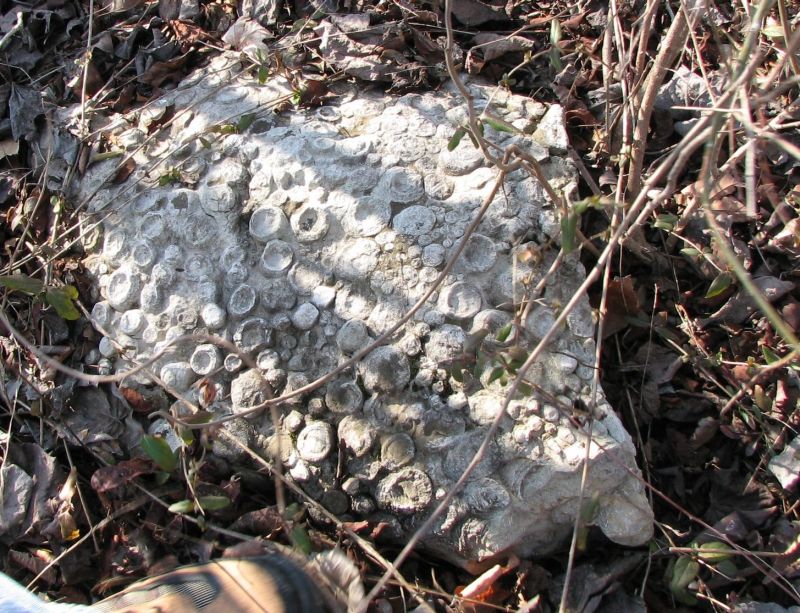
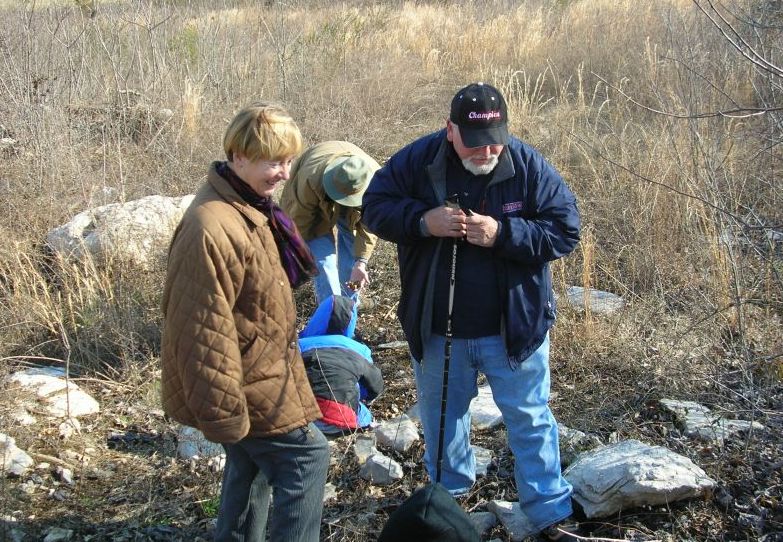
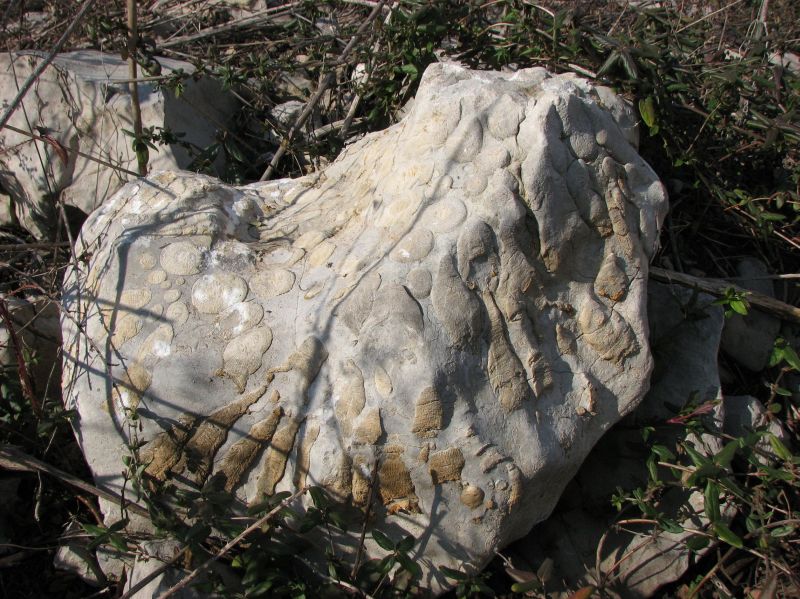
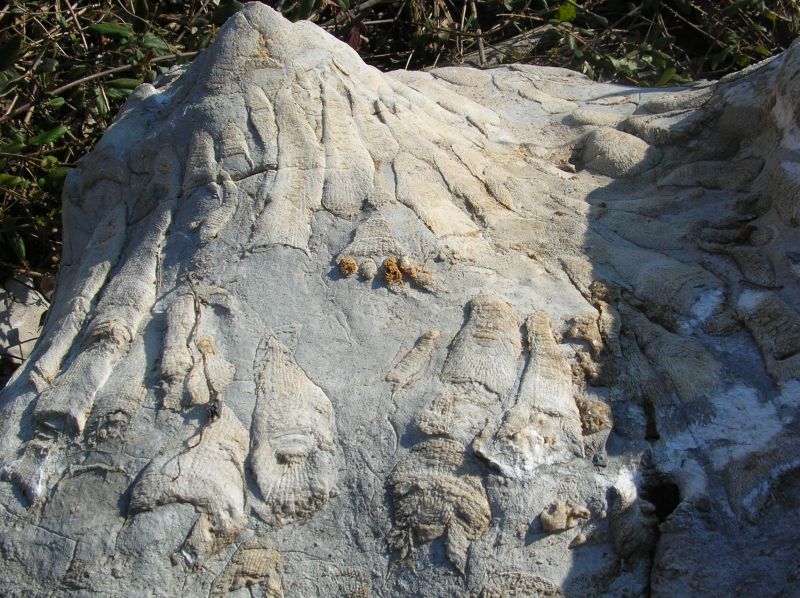
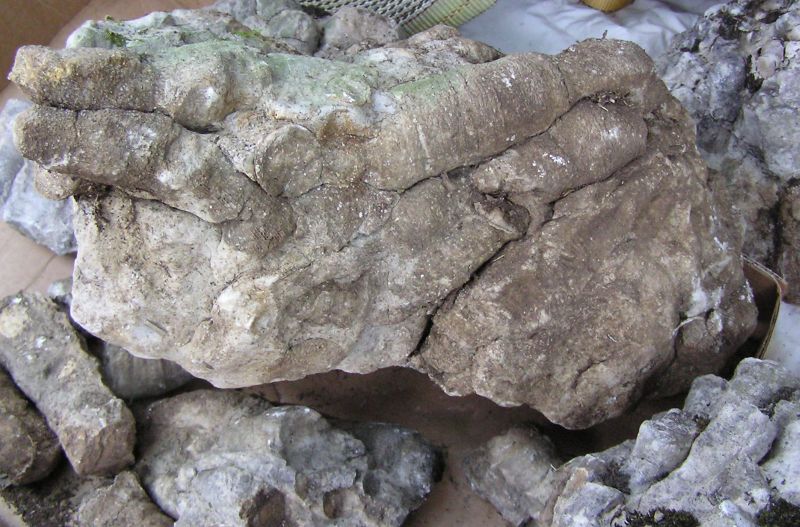
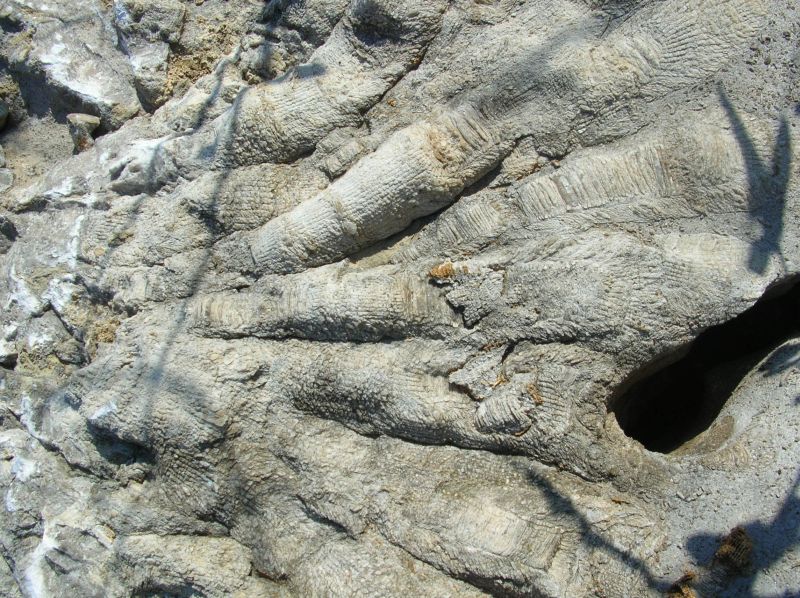
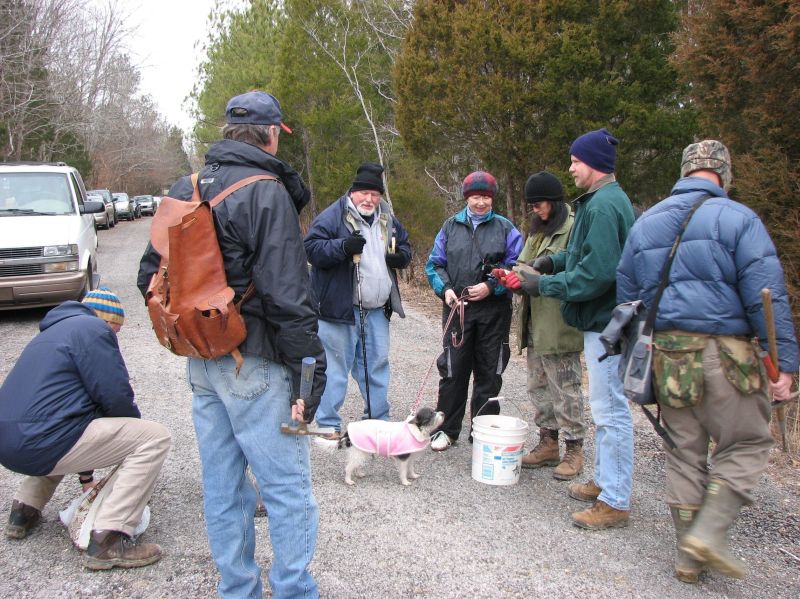
On to the next stop, where we were given an overview of the collecting area.
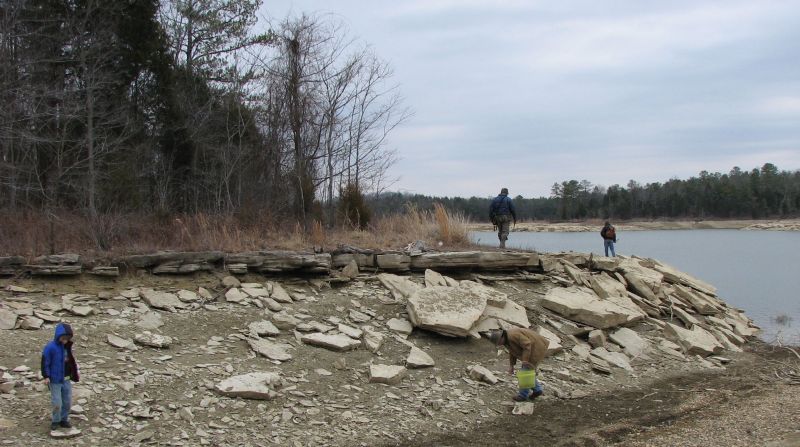
Shoreline of the lake, water is way down in winter.
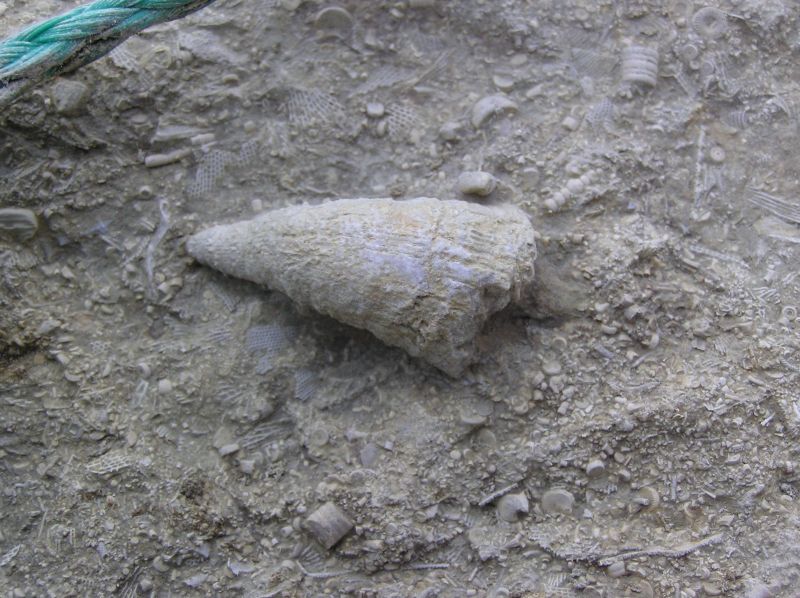
Horned coral.
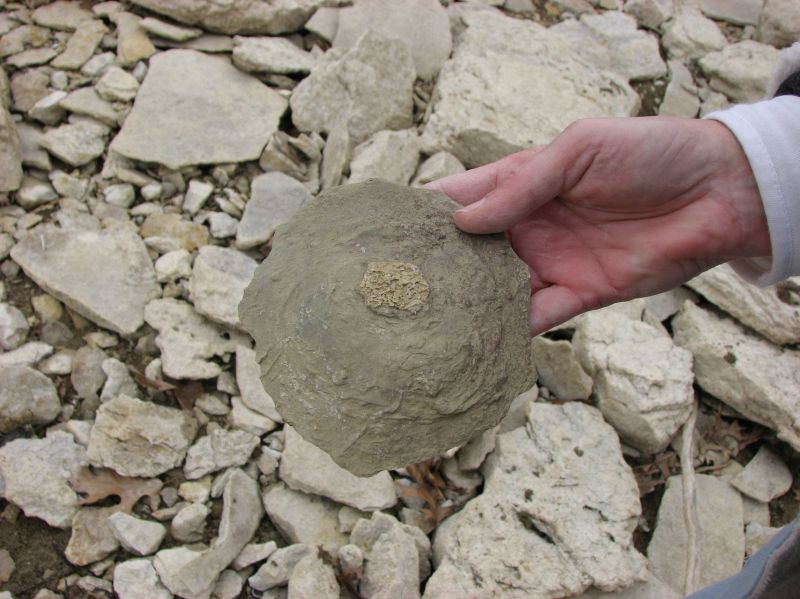
A sponge?
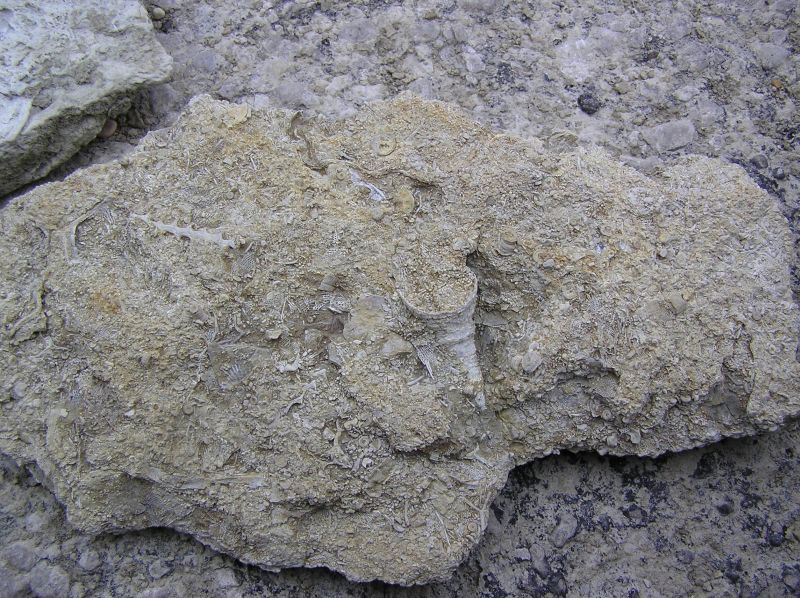
Horned coral.
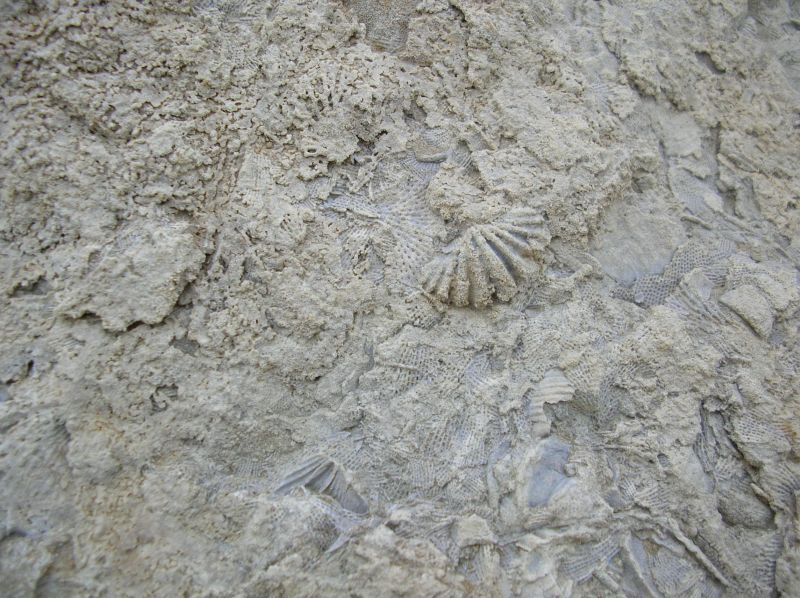
Nice brachiopod.
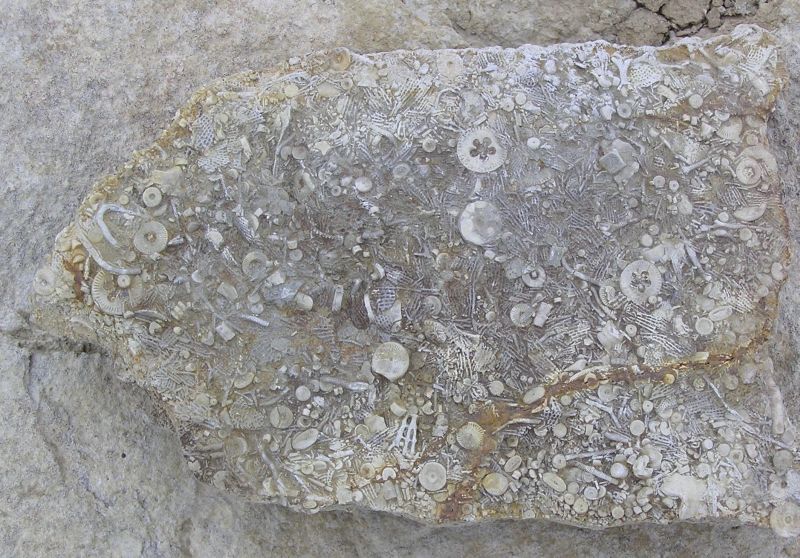
Most rocks in the area consist of numerous small fragments of fossils. Most visible on this specimen are crinoid stems and bryozoan (or the netting material from archimedes.)
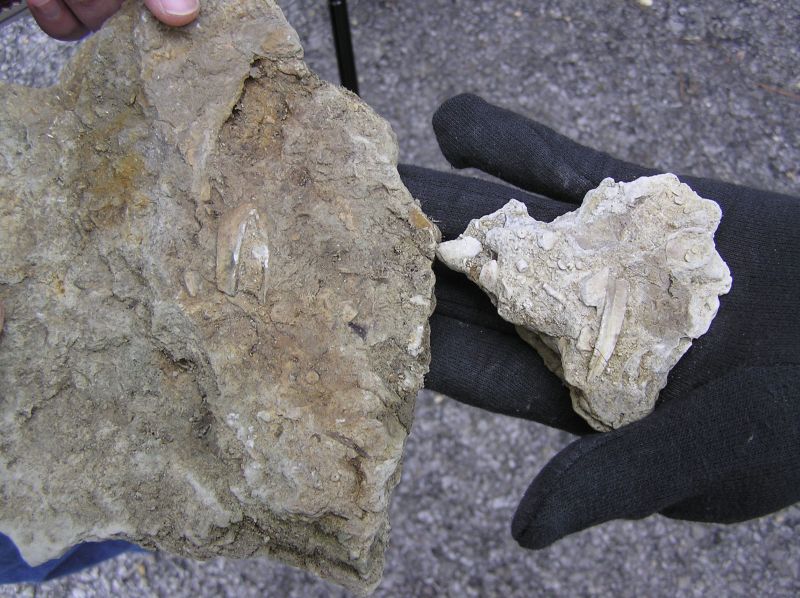
Parts of very large, but broken, blastiods.
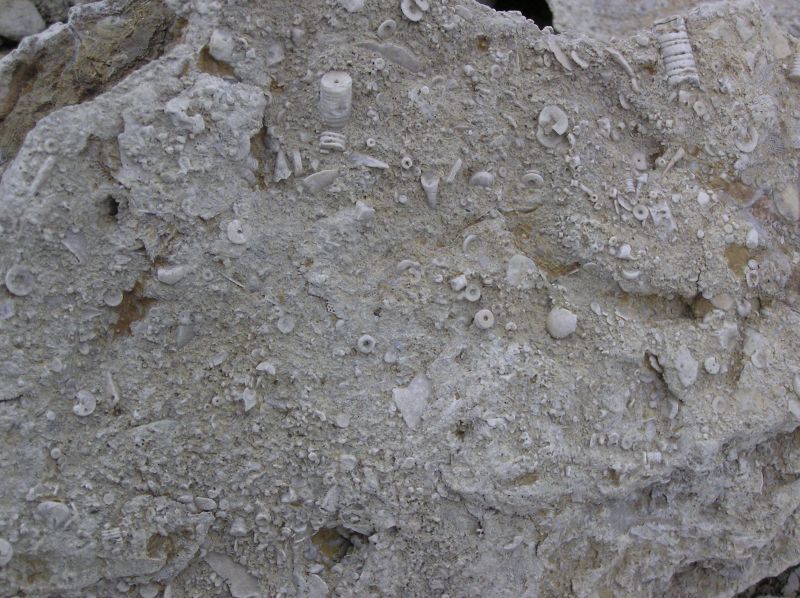
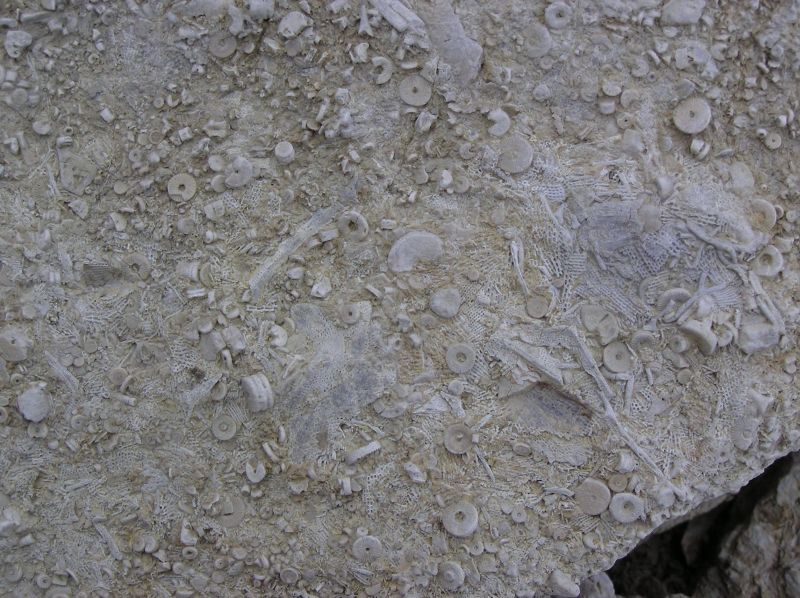
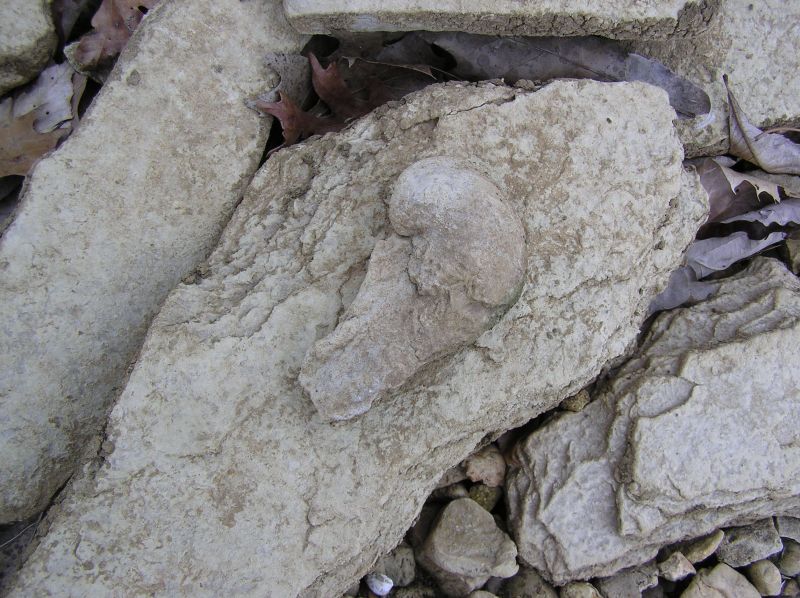
Tiny gastropod.
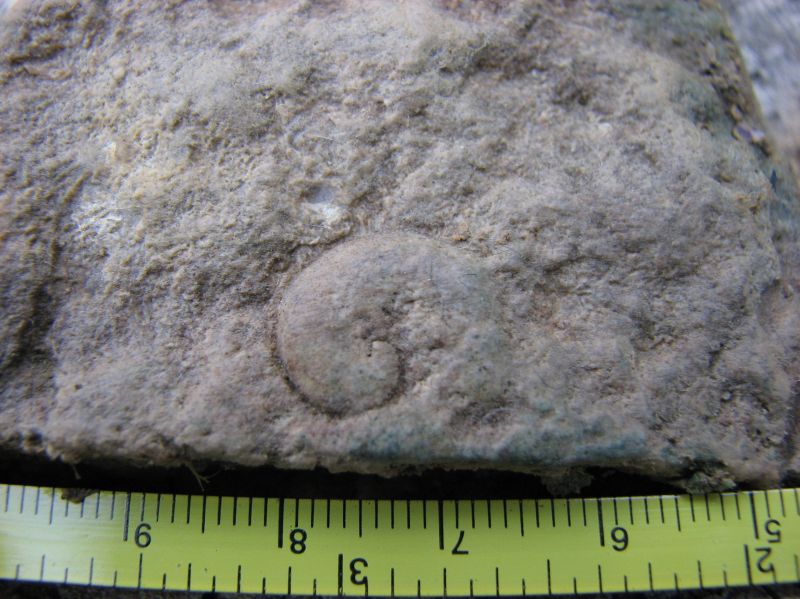
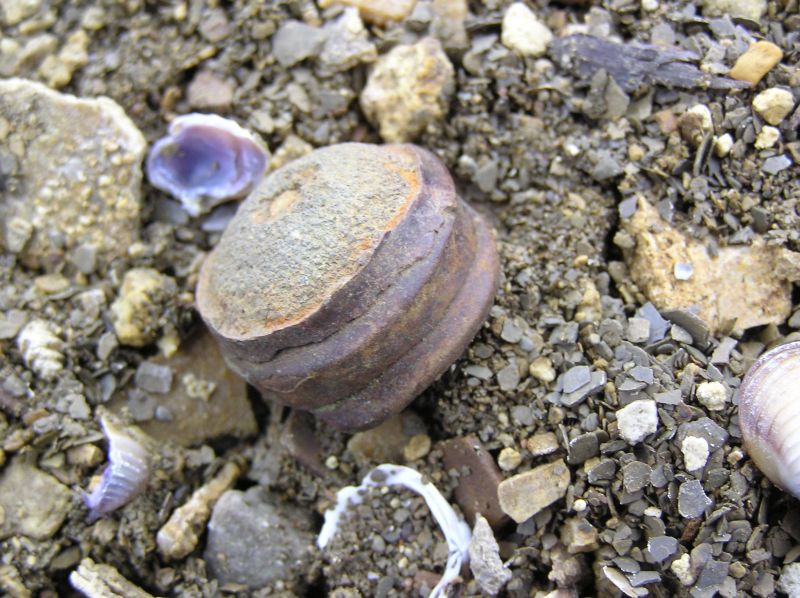
Unknown round fossil.
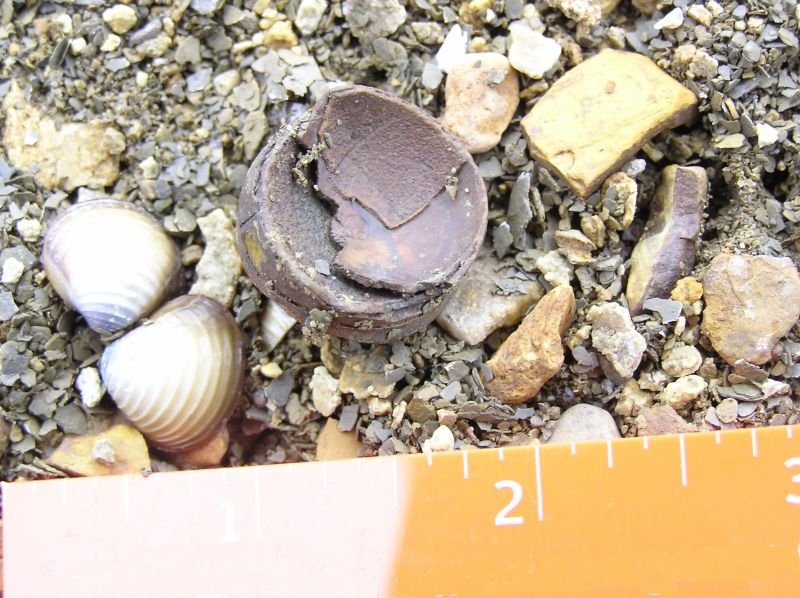
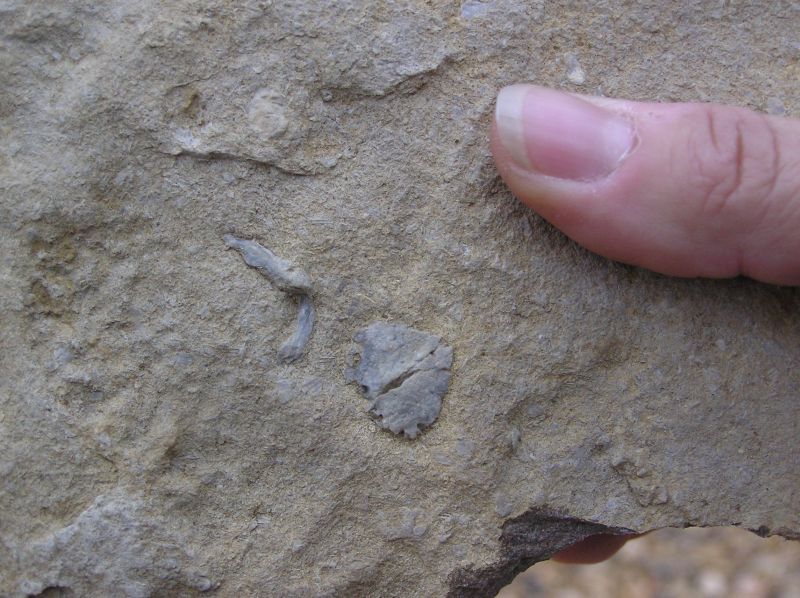
Another unknown fossil.
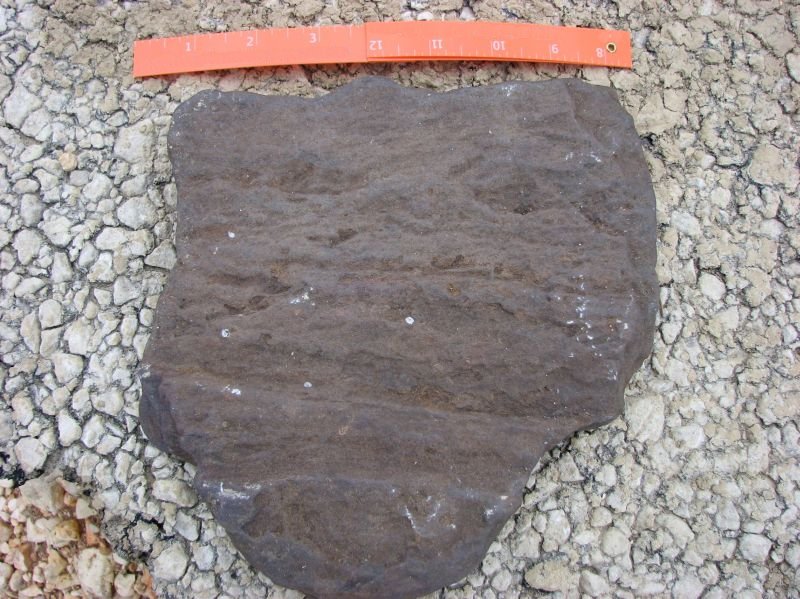
Very nice specimen of petrified/permineralized wood.
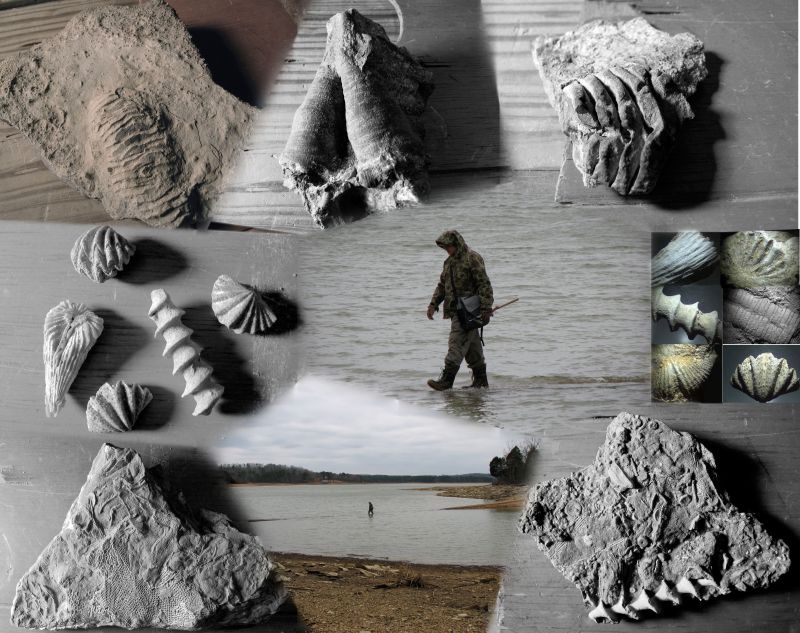
How'd he do that?? Bill has found several nice specimens. Click, then click again for larger image.
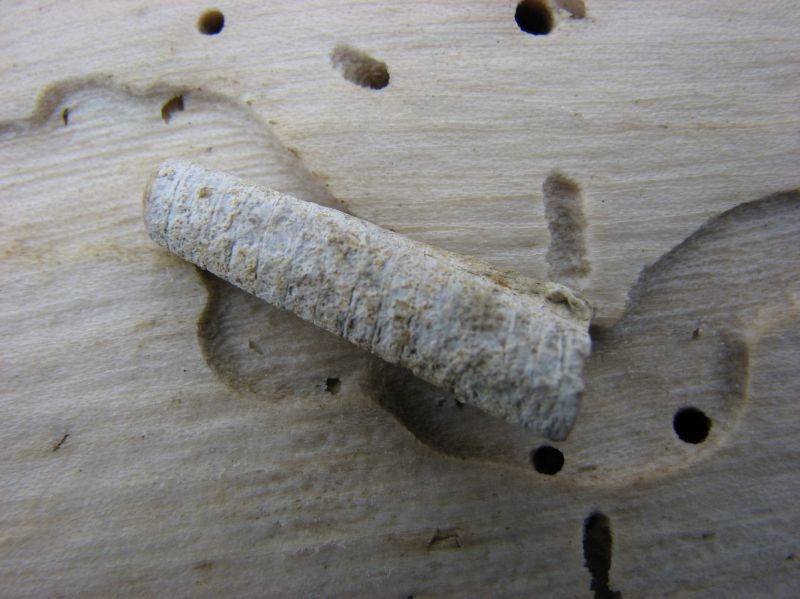
Nice cephalopod.
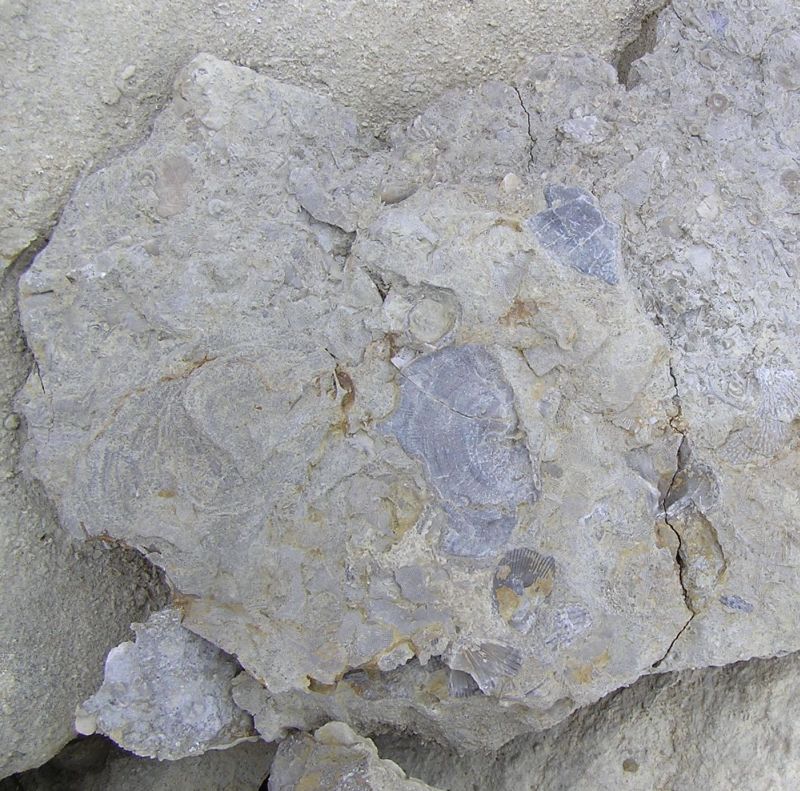
Brachiopods.
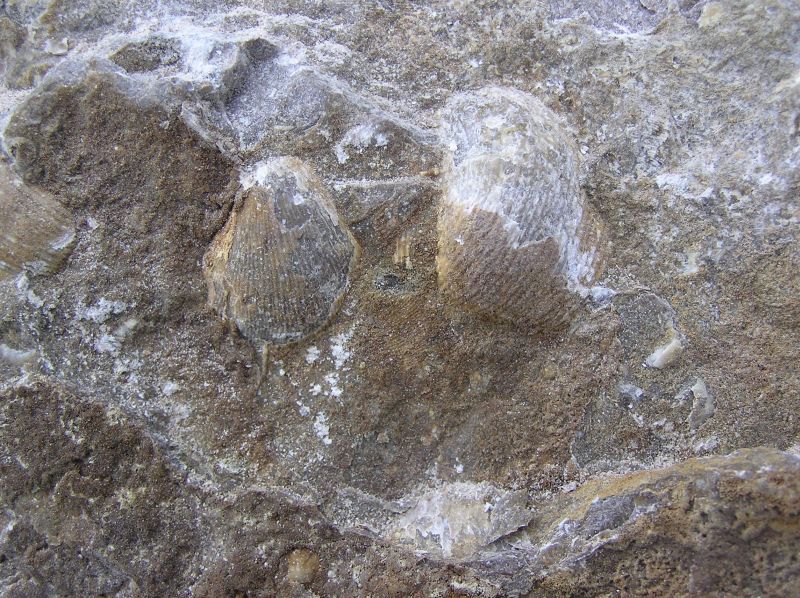
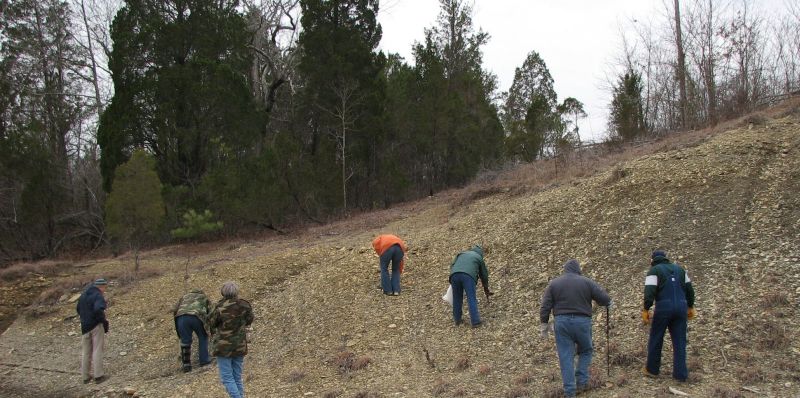
After the lake, we collected at a nearby roadcut.
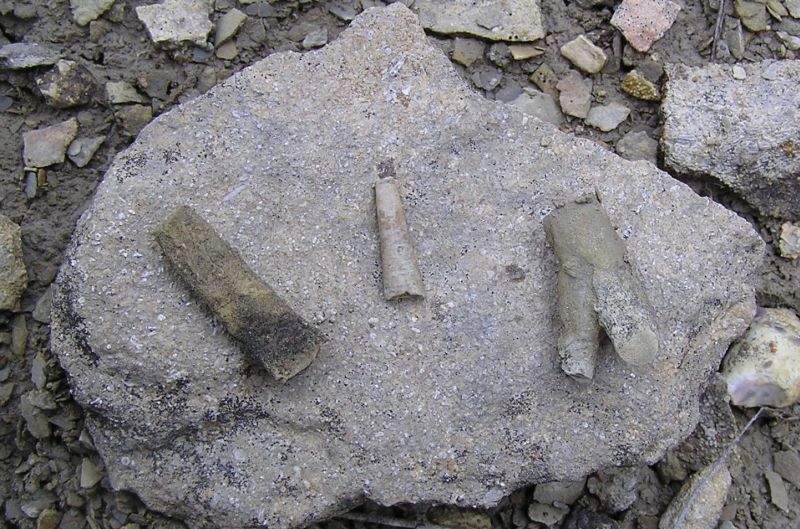
Numerous specimens of burrow casts were found, and also a few straight cephalopod's (in middle).
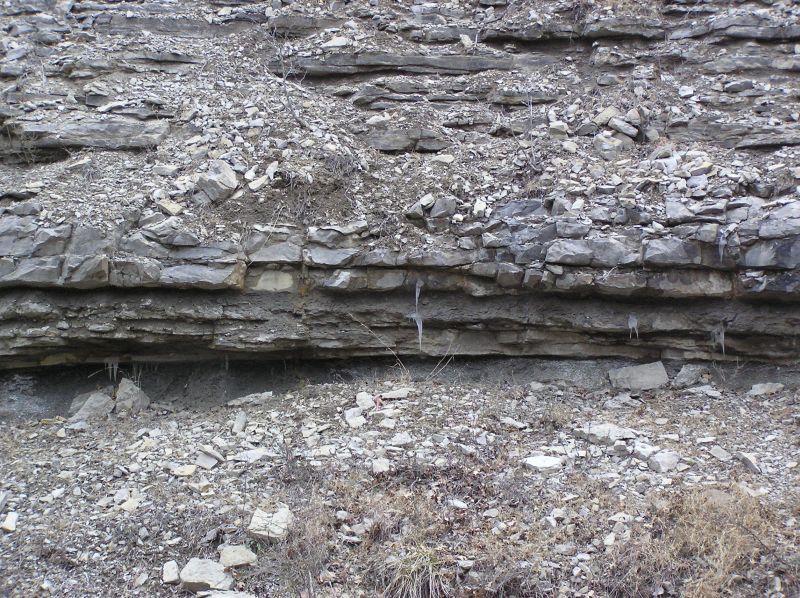
At the last stop of the day, geologic layering is very prominent.
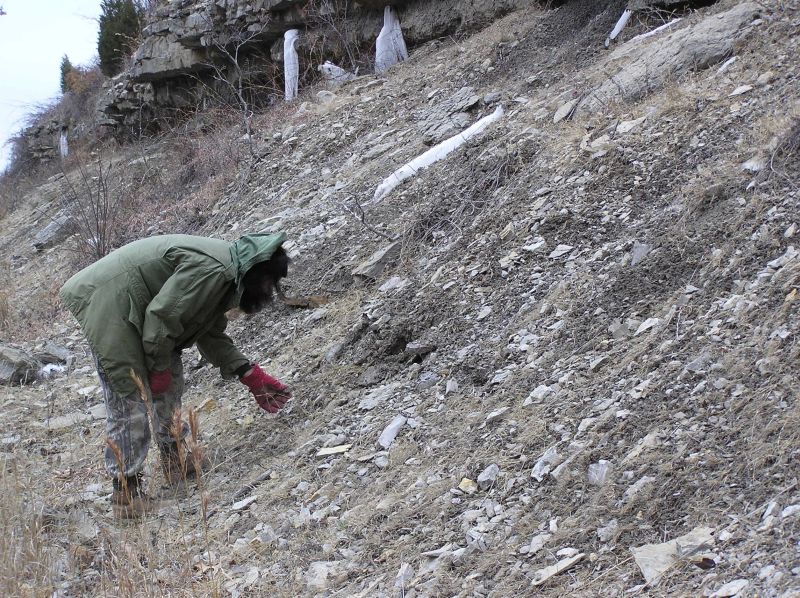
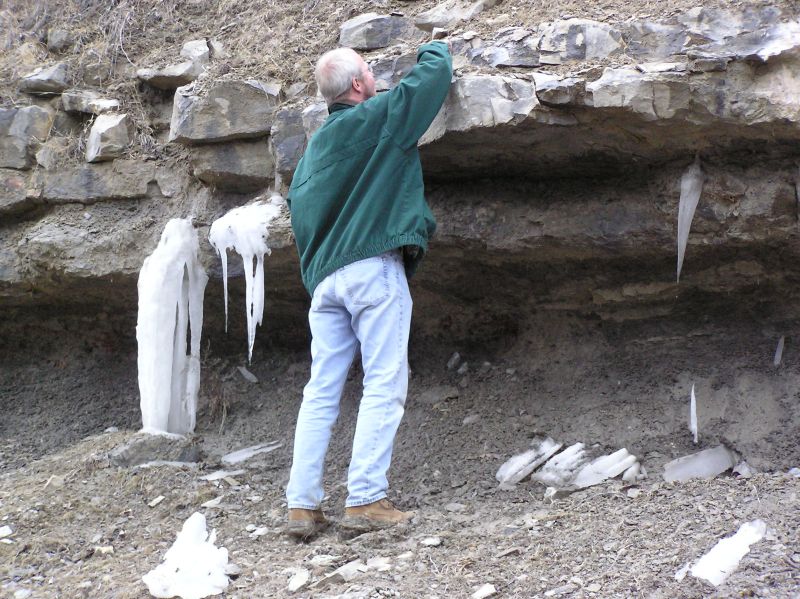
Tall people have a distinct advantage!
Stop 1 was a late Cambrian site, Dresdachian stage, (515 MYA) which yielded a number of Brooksella.
Stop 2 was in the Albertan stage approx 530MYA. Thanks to Capt. Steve, a short boat trip to the collecting site yielded some good specimens of trilobites which appear to be Kingstonia, Densonella, Norwoodella, and Cossella.
The evening of the first day was spent at a local Seafood house followed by a delightful evening spent at a cabin rented by BPS. We celebrated Jan and Lea Novaks birthdays; Lea baked her own cake, a Czech trilobite cake, which was great. This was followed by much good drink, a spirited backgammon game, Pro football on the big screen TV (yes we were roughing it), more good drink, talk and blues on the radio.
Day 2 was another warm day for January starting with a good and inexpensive breakfast at the local fish camp. There was more fossil hunting on the local beach followed by several hours of splitting shale on another beach which was also fruitful. Later in the afternoon, a number of members decided to scout some new sites which we were told about by a local fossil hunter we met at our first stop.
(Photos courtesy Bill Fowler, Steve Corvin, and Vicki Lais)
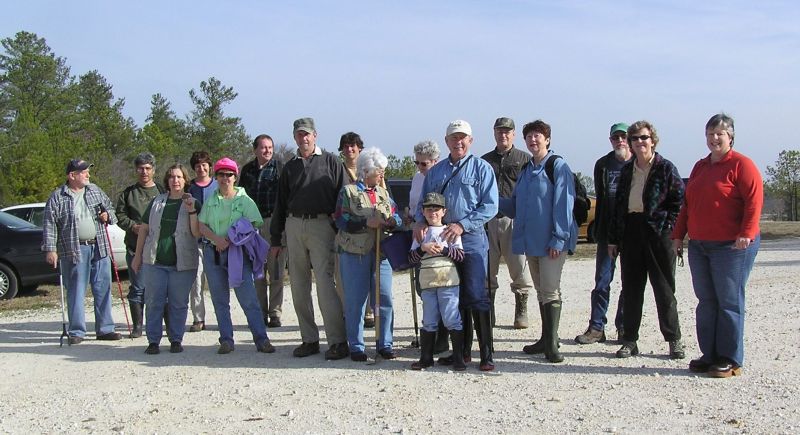
Everyone is anticipating a great day of collecting!
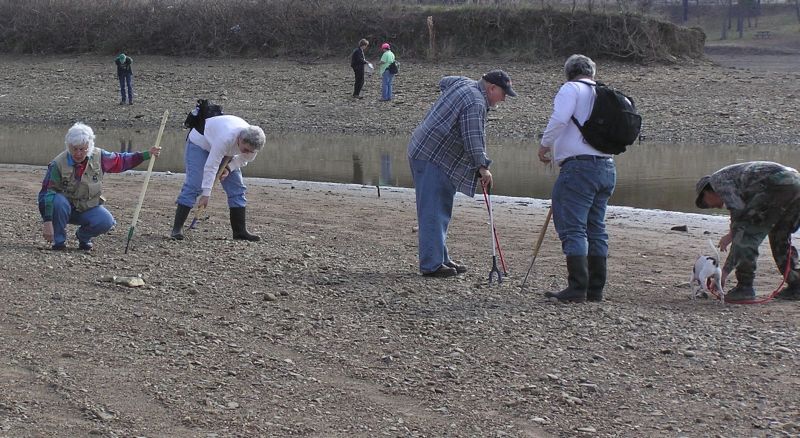
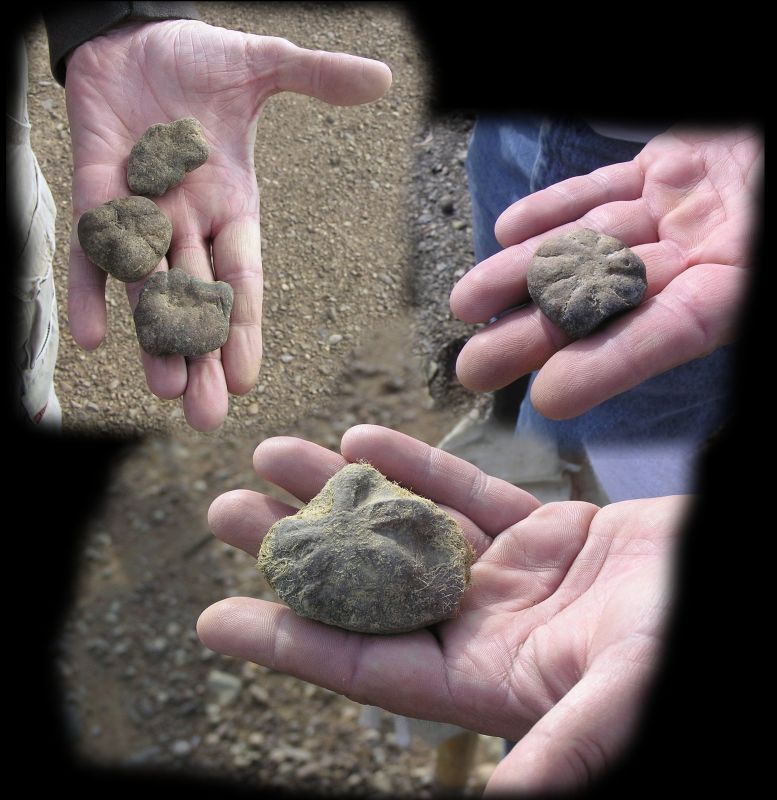
Samples of the nice brooksellas that were found.
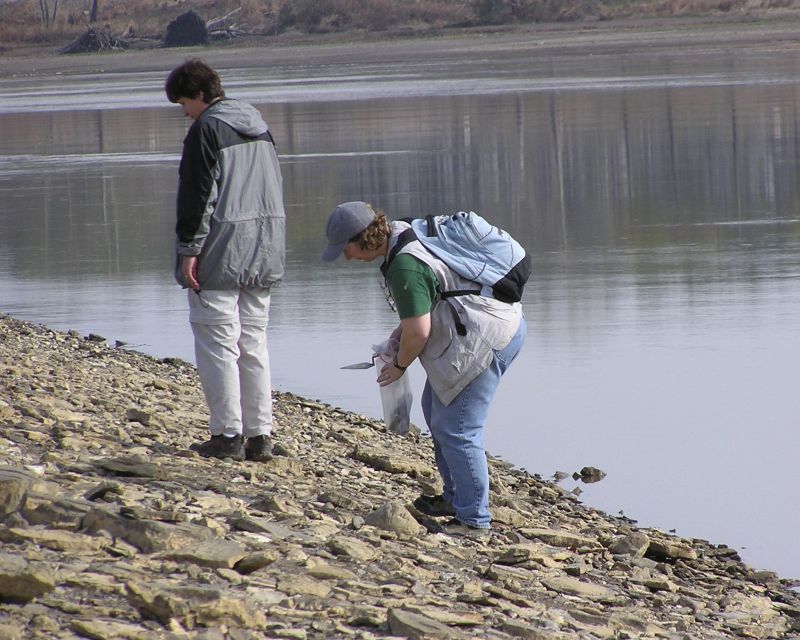
Lea and Claire surveying the area.
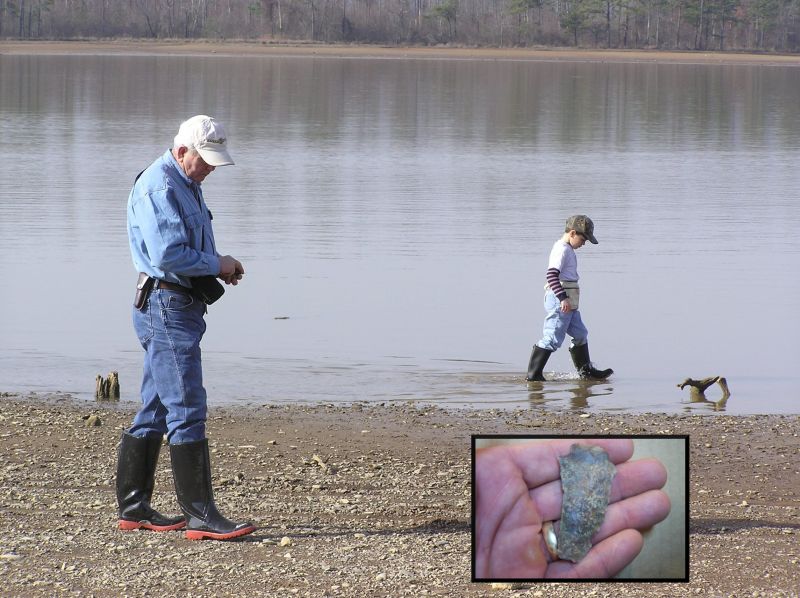
Steve found a nice point in the area.
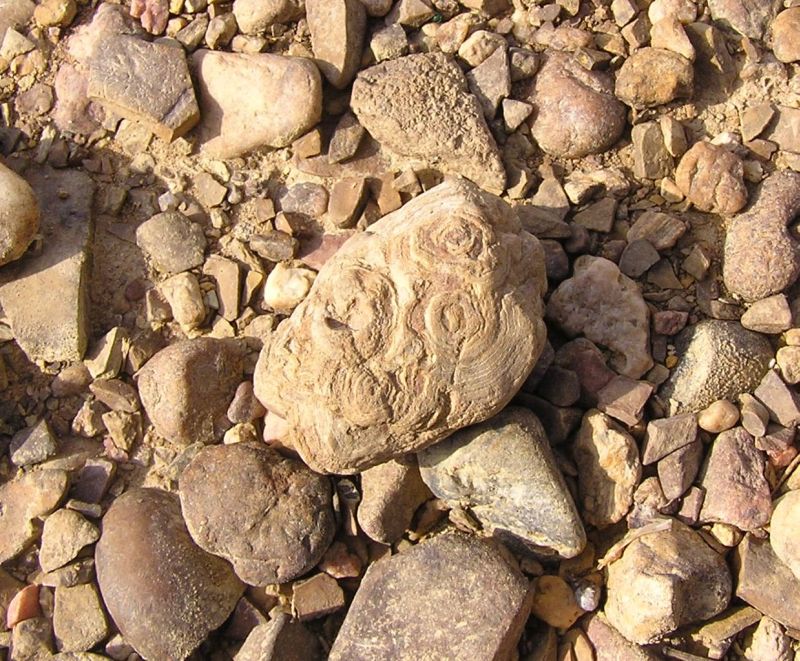
Nice stromatolite found by Vicki.
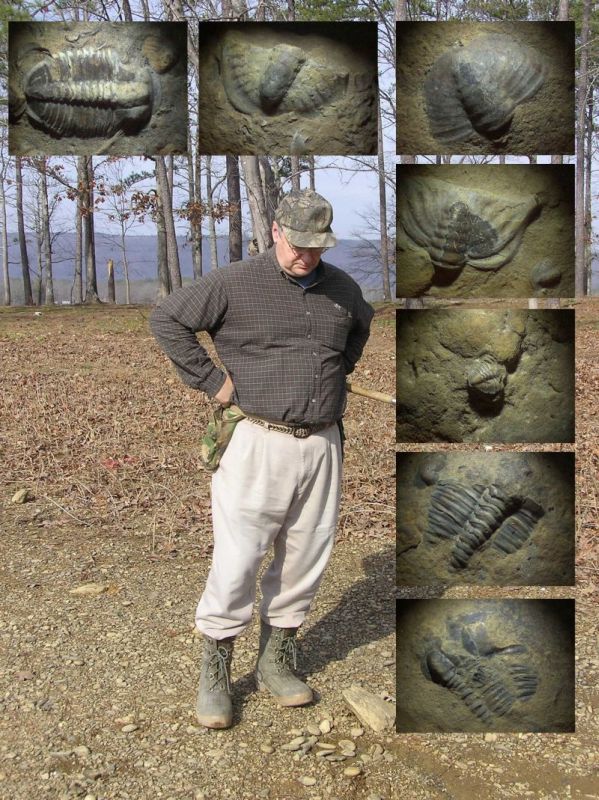
Bill and some of his small trilobite finds under the microscope. Click photo (then click photo) for larger image.
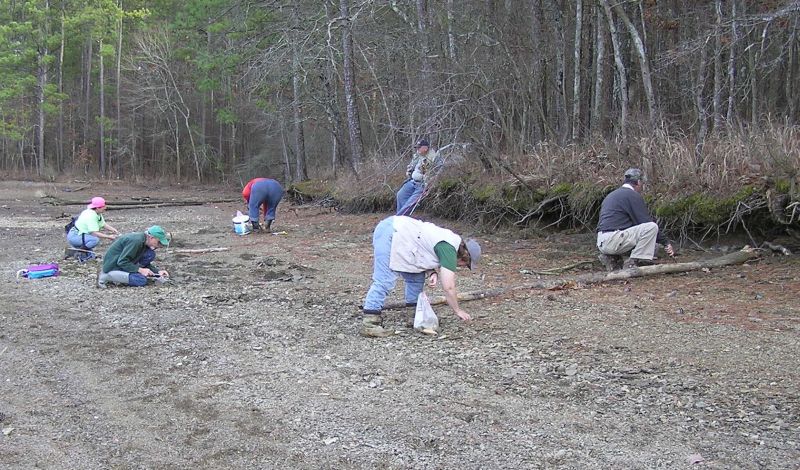
The next site required a short boat trip. The shoreline in this area is composed of deteriorated Conasauga shale.
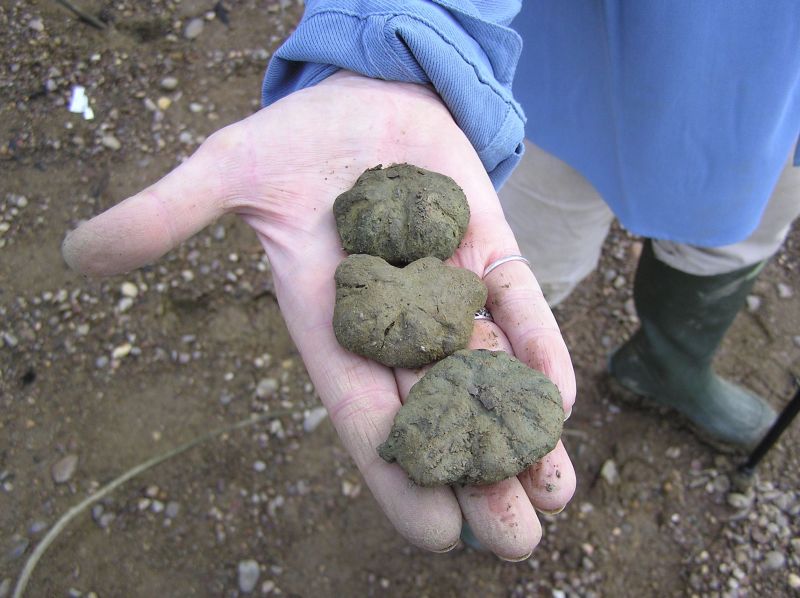
Nancy found some nice (but decidedly muddy!) brooksella.
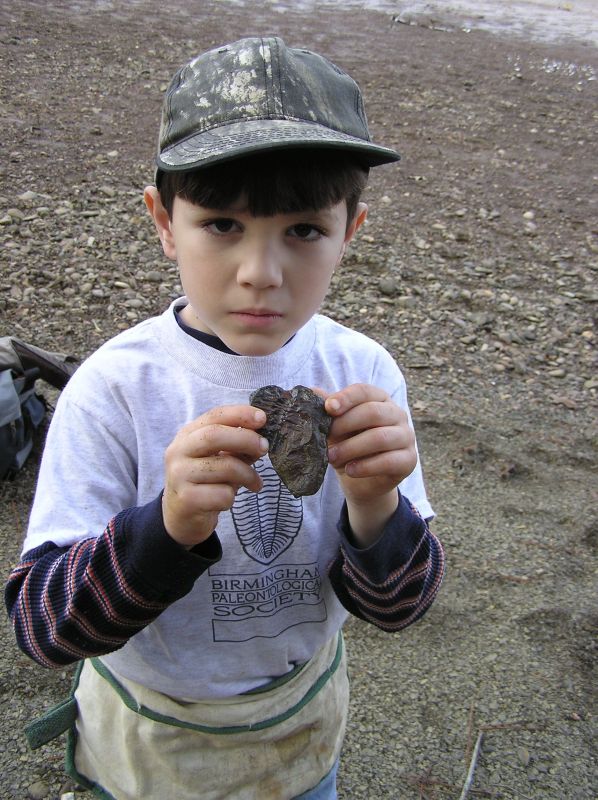
Steven with his trilobite find.
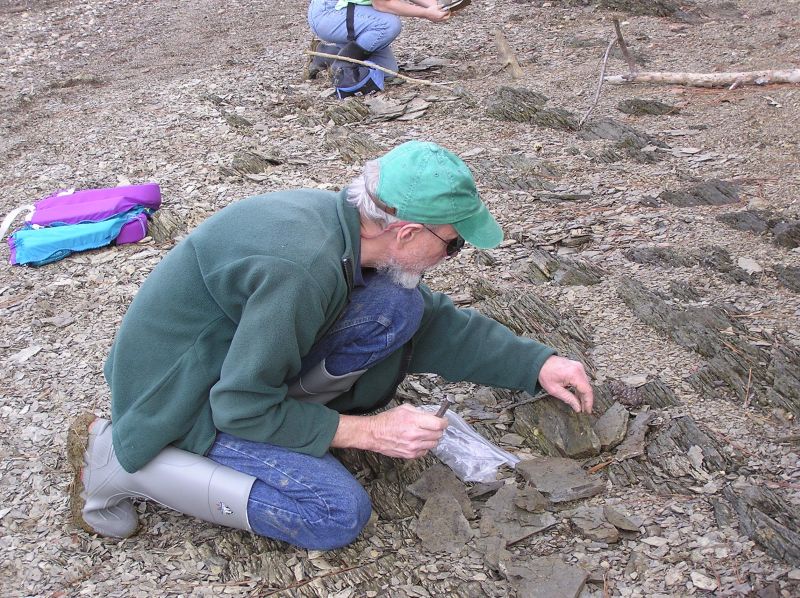
Searching for trilobites in the broken shale.
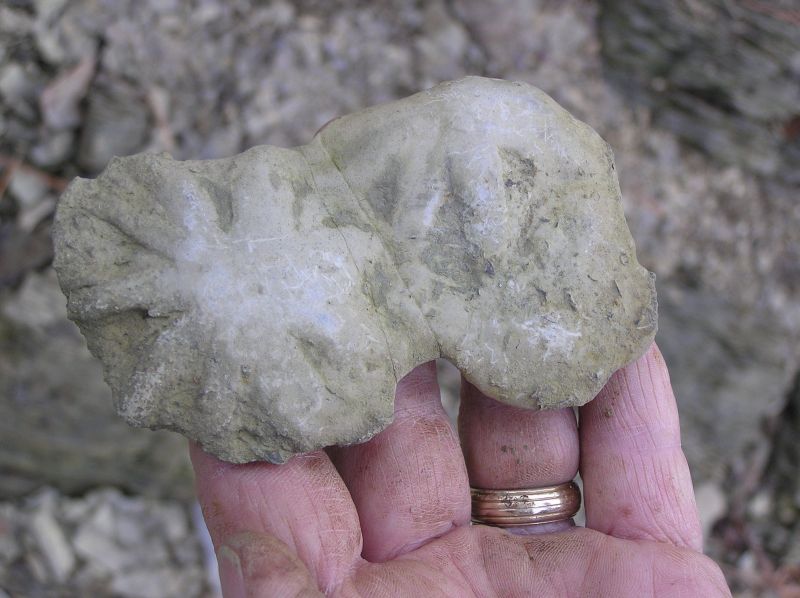
Bob found a double brooksella.
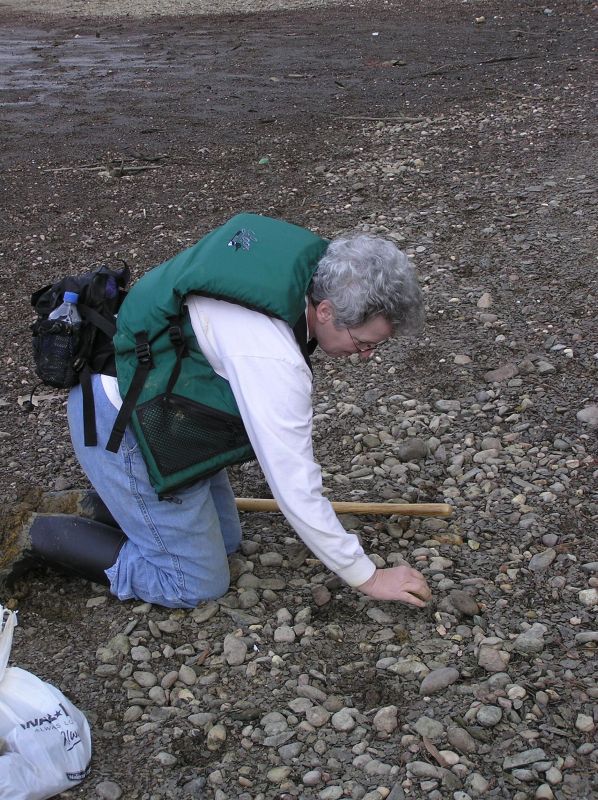
We learned the meaning of "don't leave any rock unturned" today . . .
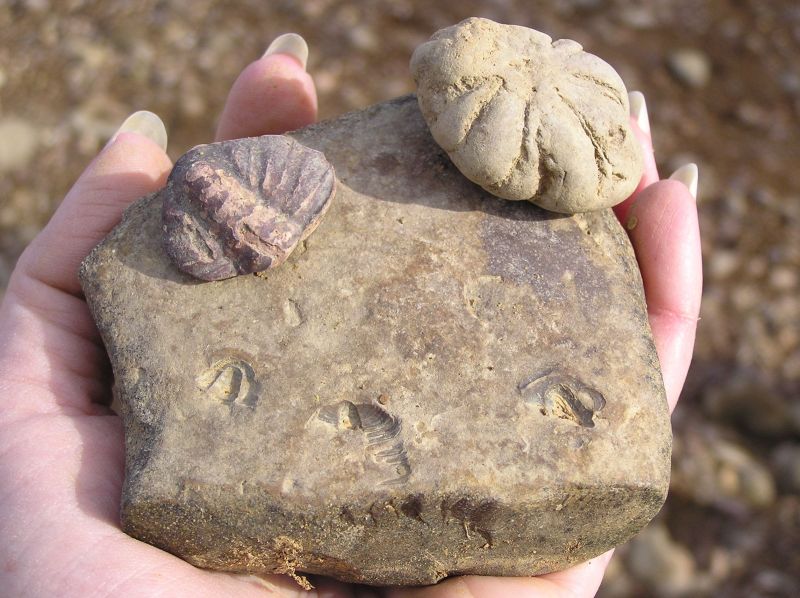
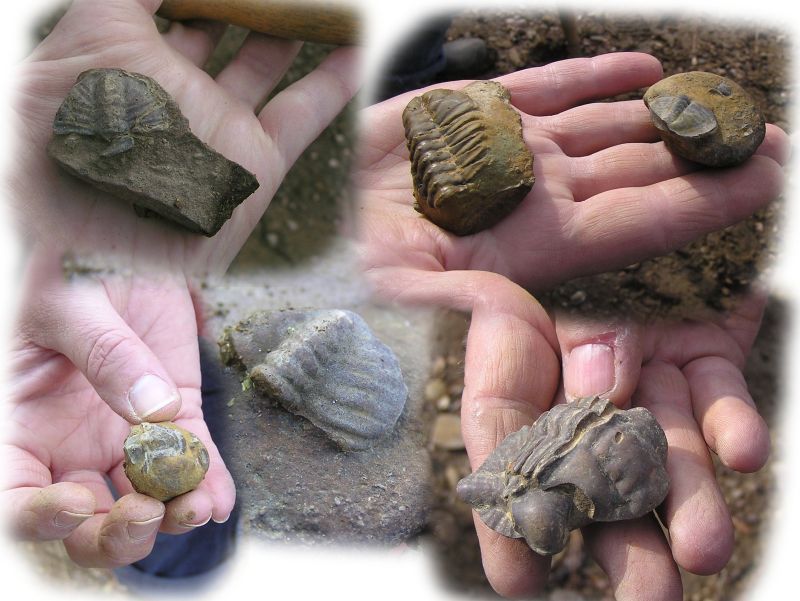
Samples of what was found on day 1.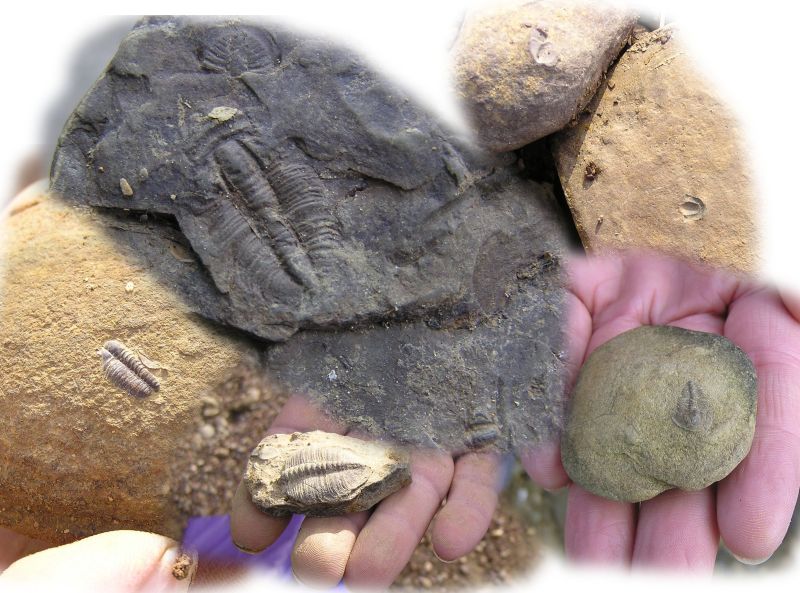
More trilobite specimens from day 1.
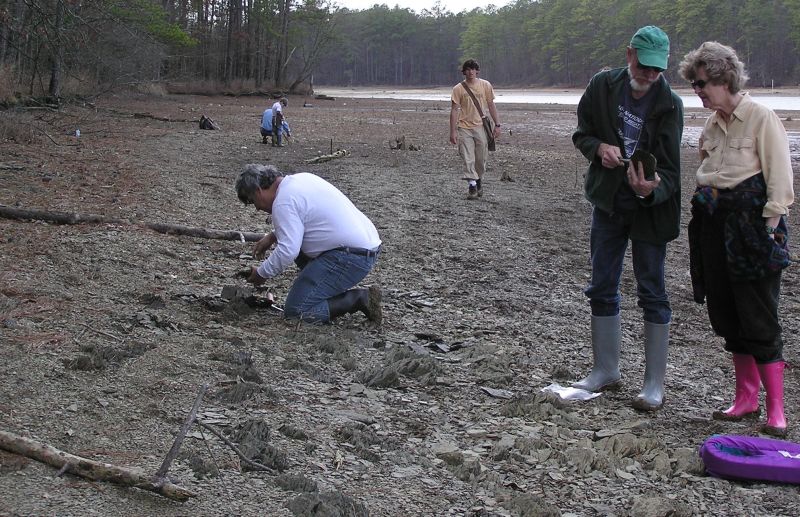
People were scattered all up and down the shoreline.
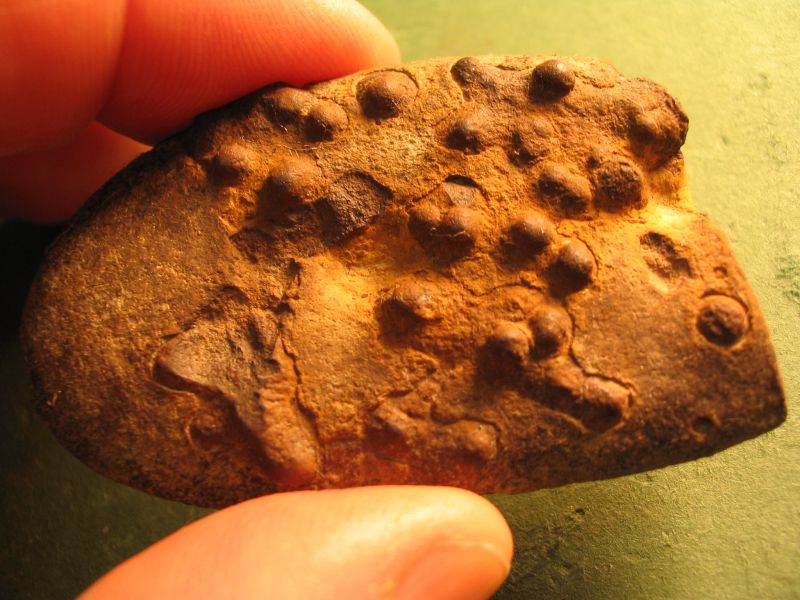
Another find by Bill, shown under the microscope.
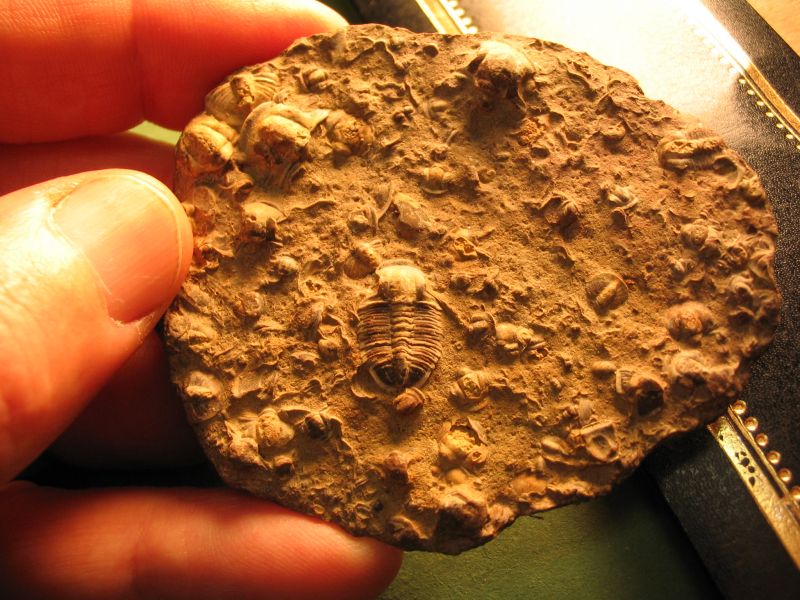
A pebble filled with small trilobites, found by Bill.
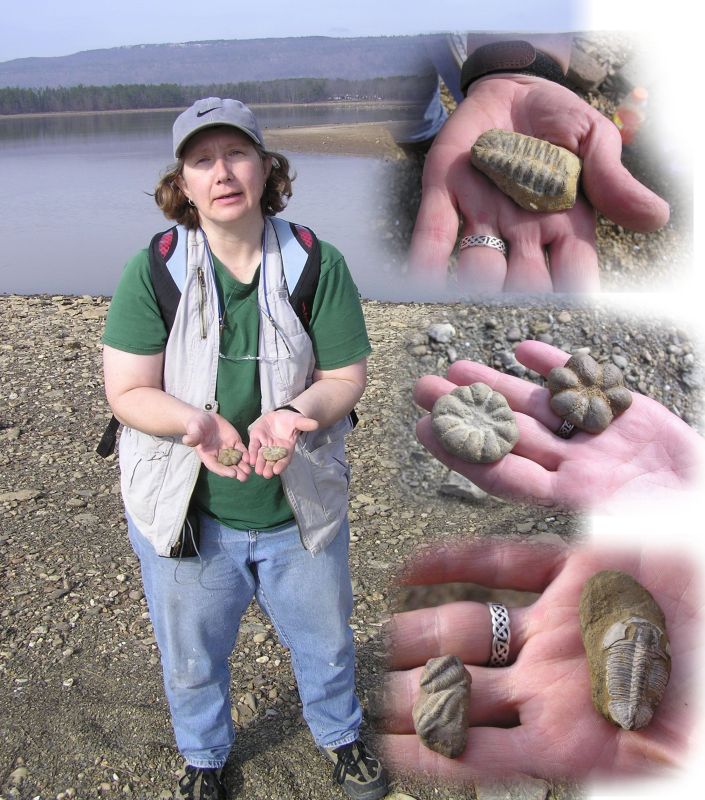
Claire and her best finds of the day - very nice brooksella and trilobites.
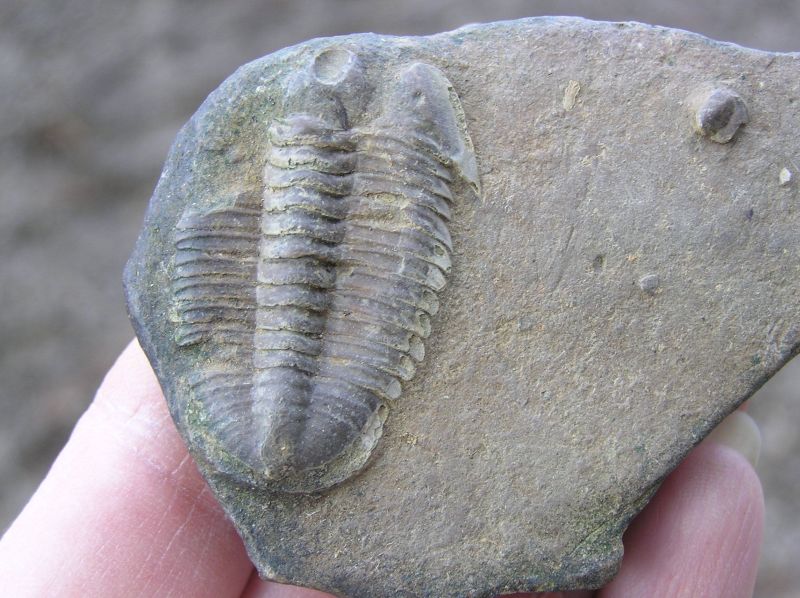
Very nice trilobite found by Bobby.
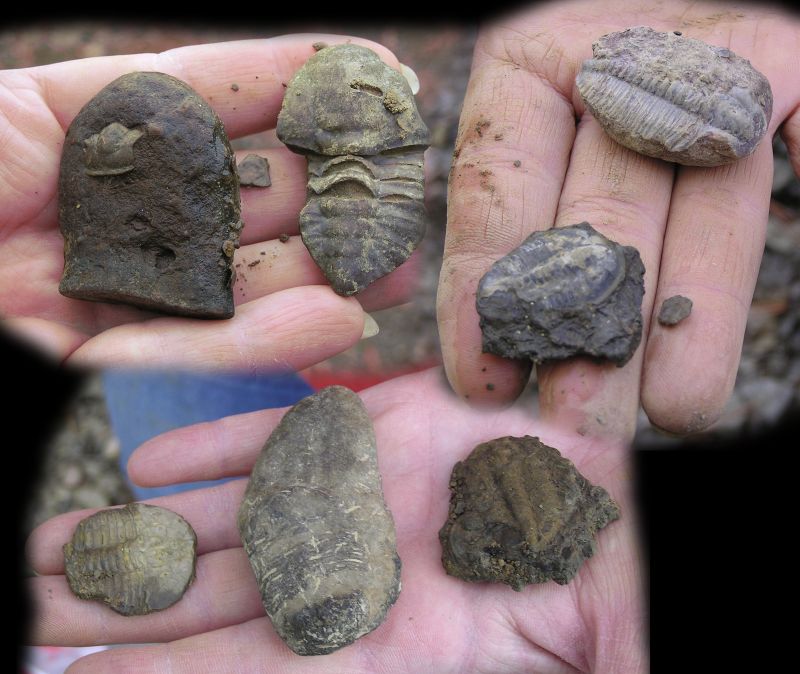
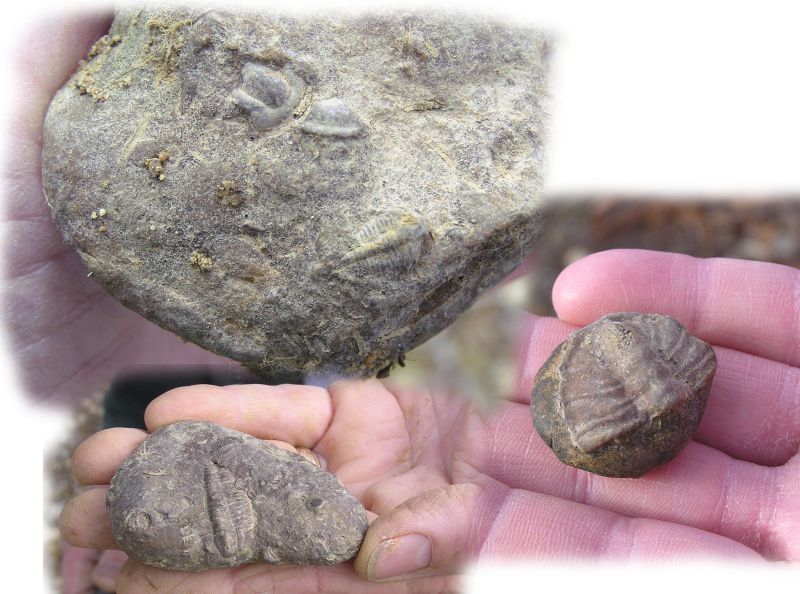
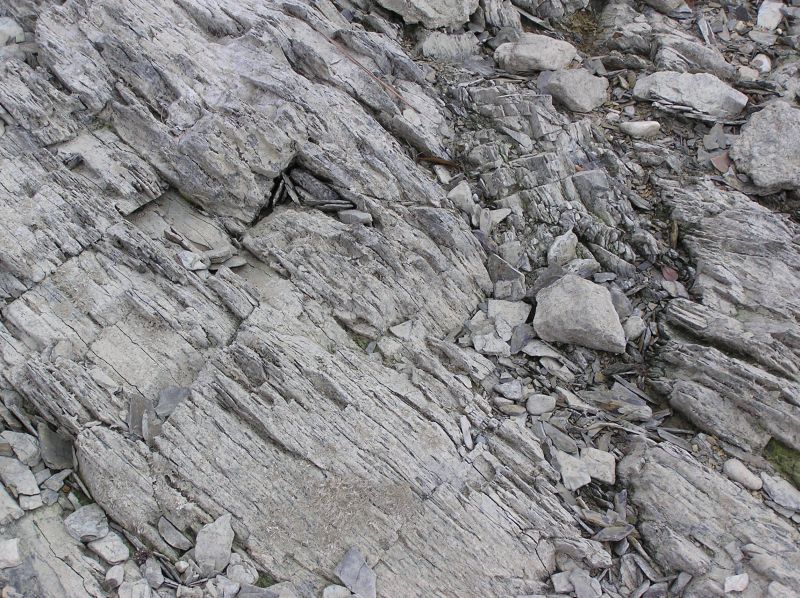
On day 2 we collected at a different site. Large outcrops of Conasauga shale turned on edge held numerous trilobites.
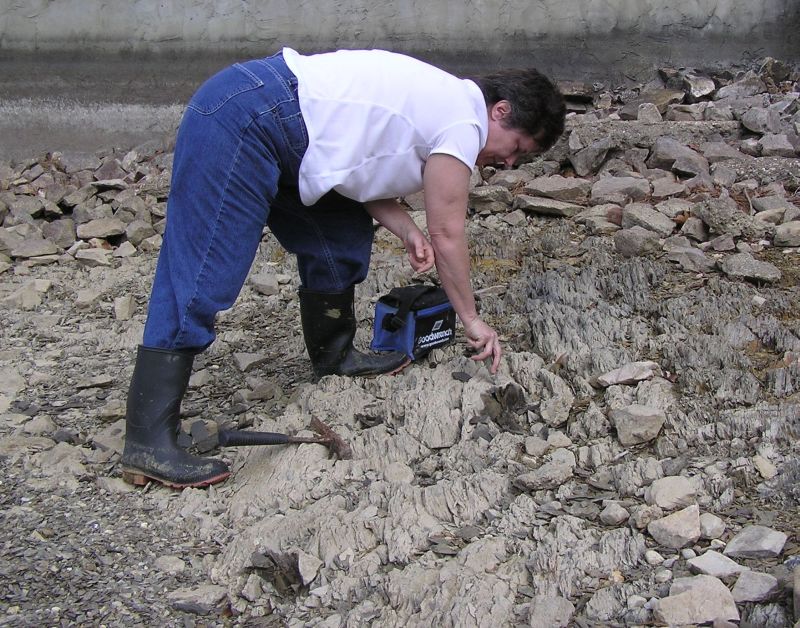
Becky is extracting small hunks of the shale to carefully split apart.
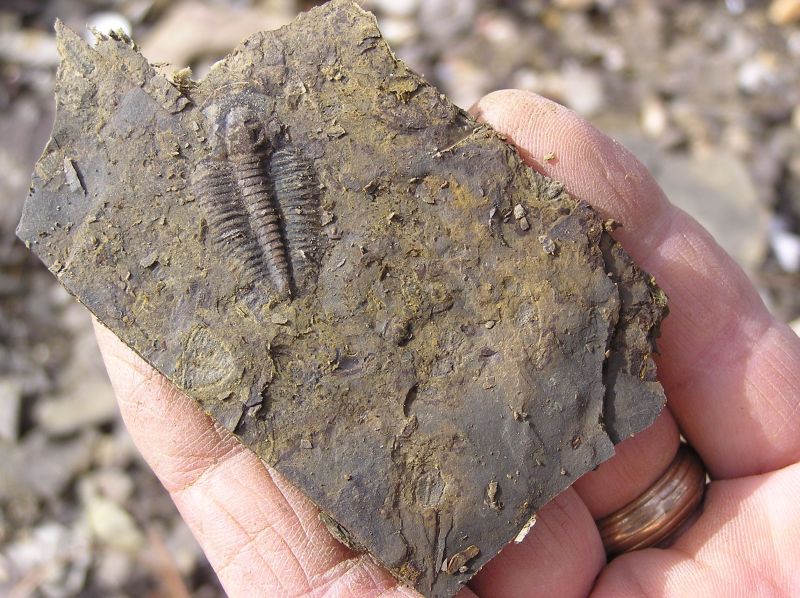
Nice trilobite specimen found at this site, found by Pam and Bob.
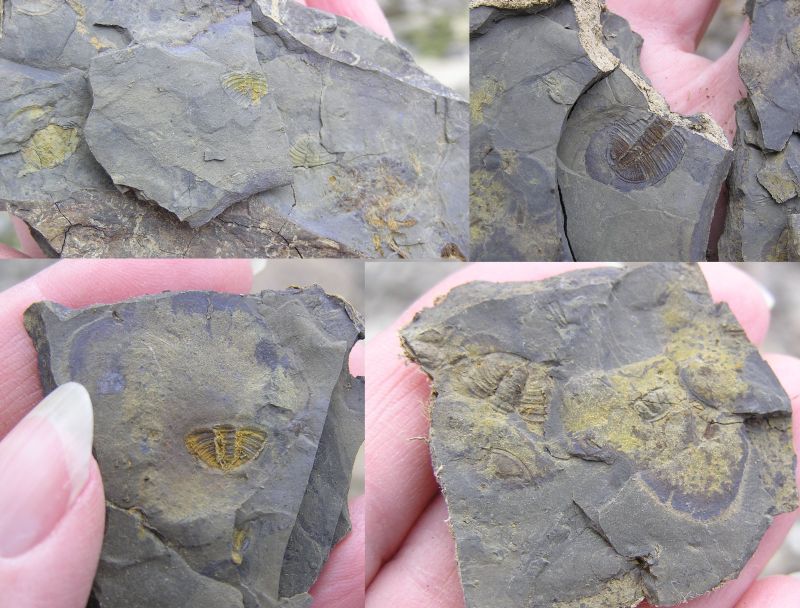
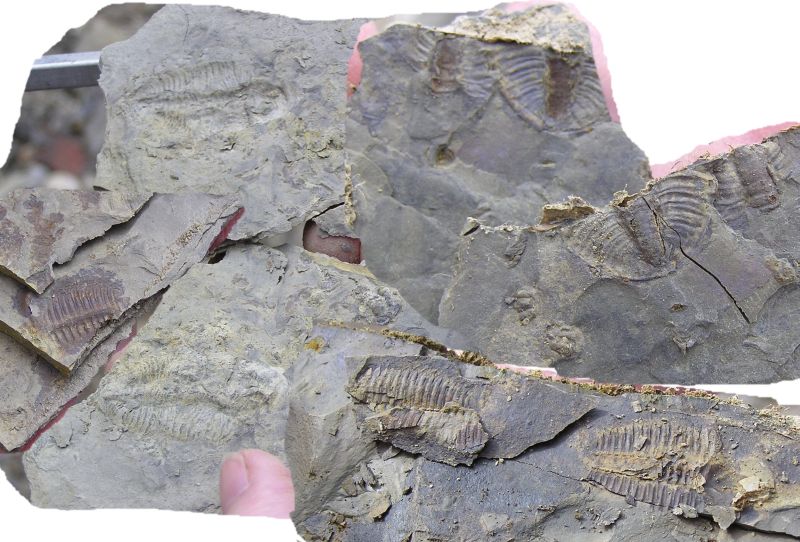
Leisa was having very good luck splitting the shale.
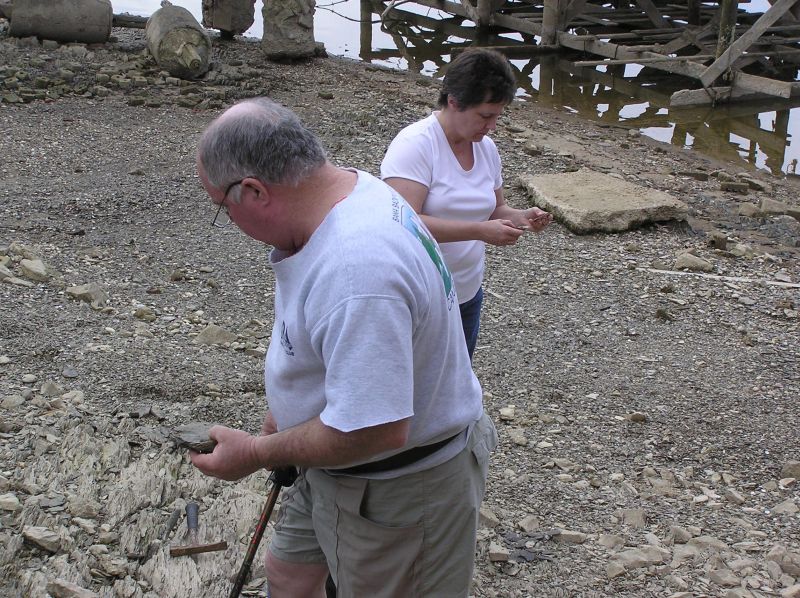
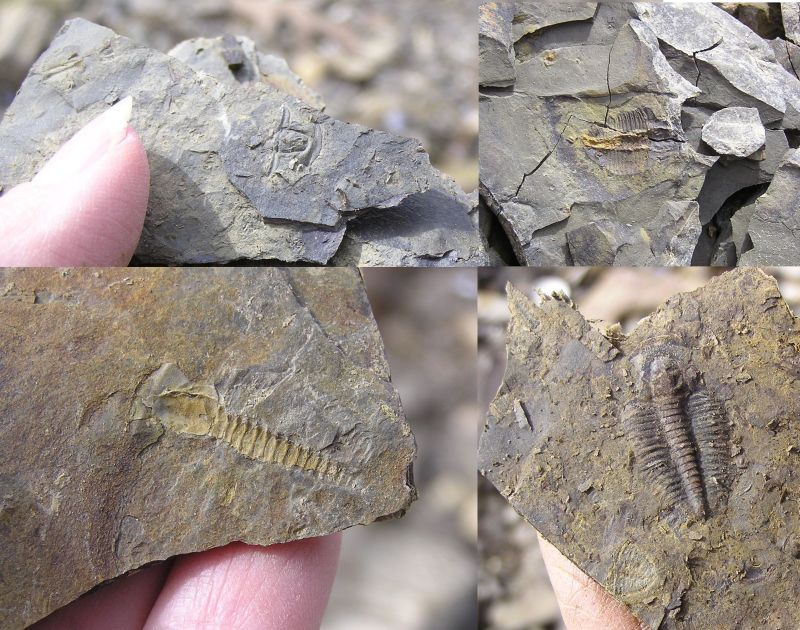
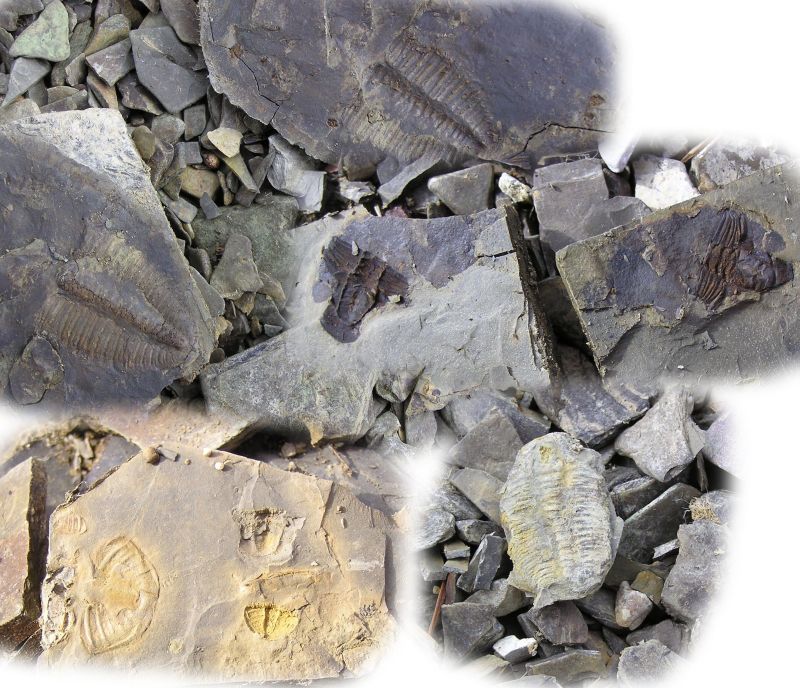
Since the grey-on-grey of the limestone makes it difficult to photograph the details clearly, Chris took multiple photos of the boulder, then used “stitch” photo technology to create detailed photographs of the complete rock surface. By using extreme macro and pasting the sections together, we have gotten far better records of those surfaces and the fossils they contain than with past techniques.
The Ruffner Mountain quarry is a fascinating place to visit and learn more about the Alabama fossil record. BPS is glad that we can contribute to the educational services of the Nature Center by our documentation.
After a late lunch at a locally famous hamburger joint, it was time to head home and get ready to party! All-in-all, a great day, topped off by the annual Xmas party. Good company, good food, Dirty Santa, a lot of laughter, and live music from our very own Lea Novak. It doesn’t get much better than that!
--Edited by Vicki Lais
(Photos courtesy Chris and Vicki Lais)
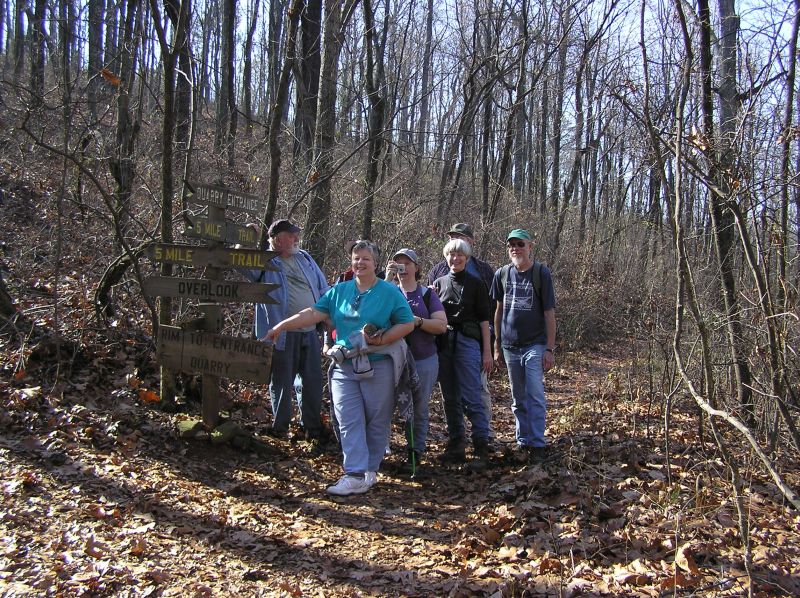
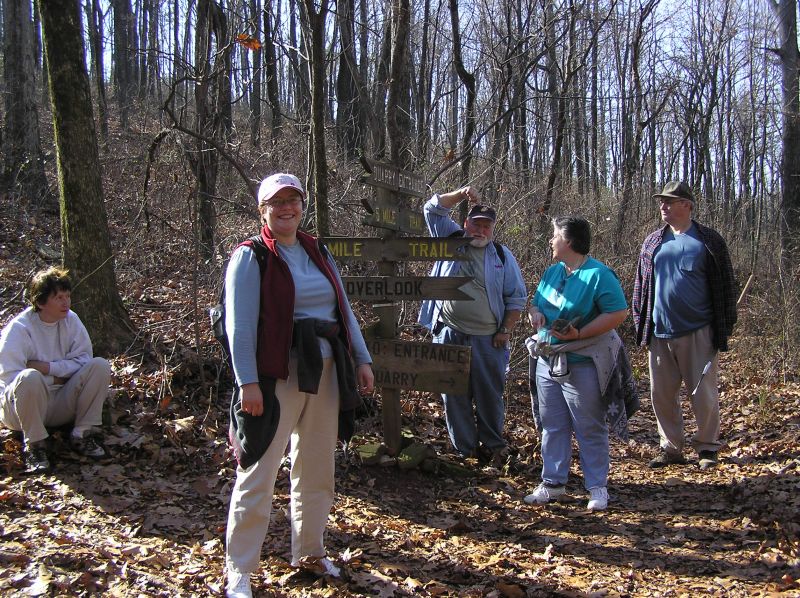
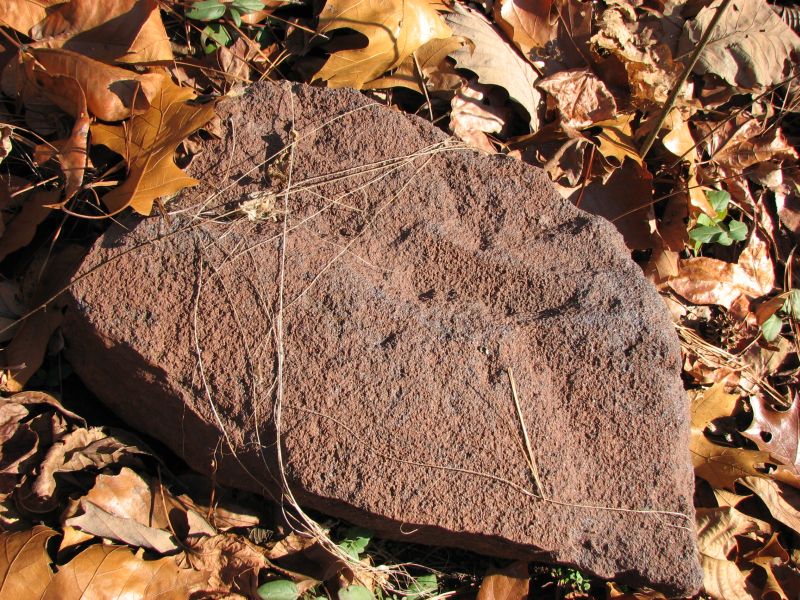
Iron ore spotted on path to quarry.
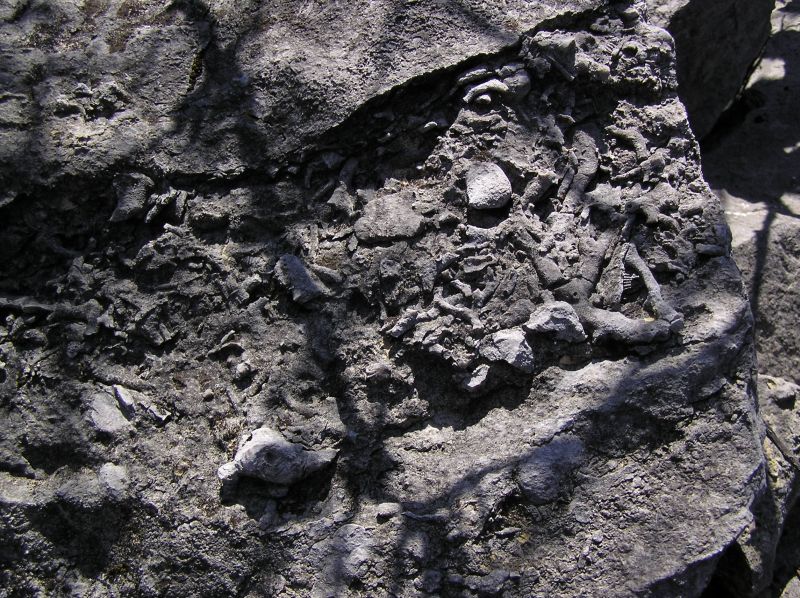
Mixture of fossils including brachiopods and bryozoans.
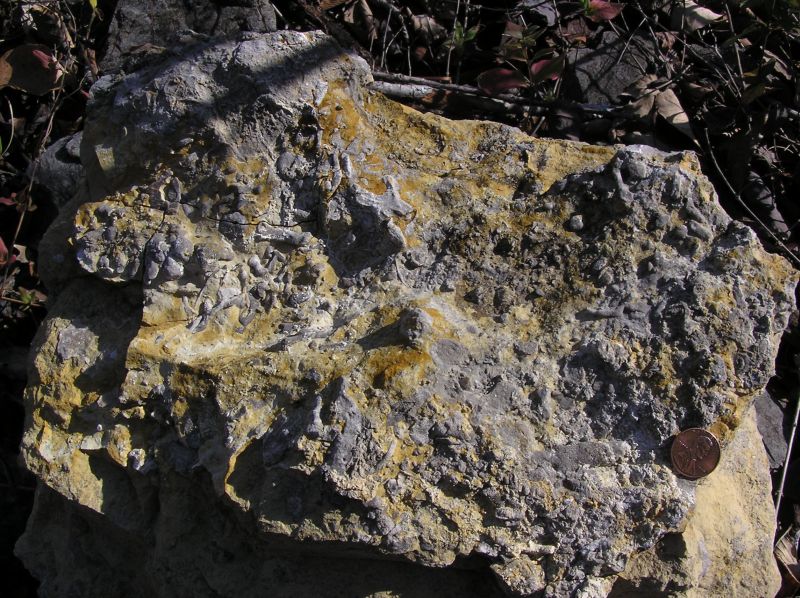
Most of the fossils are badly weathered.
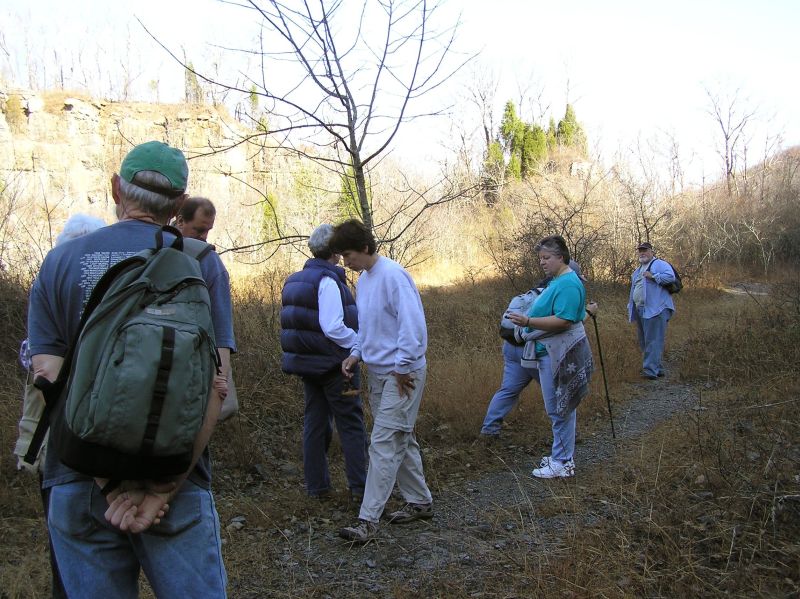
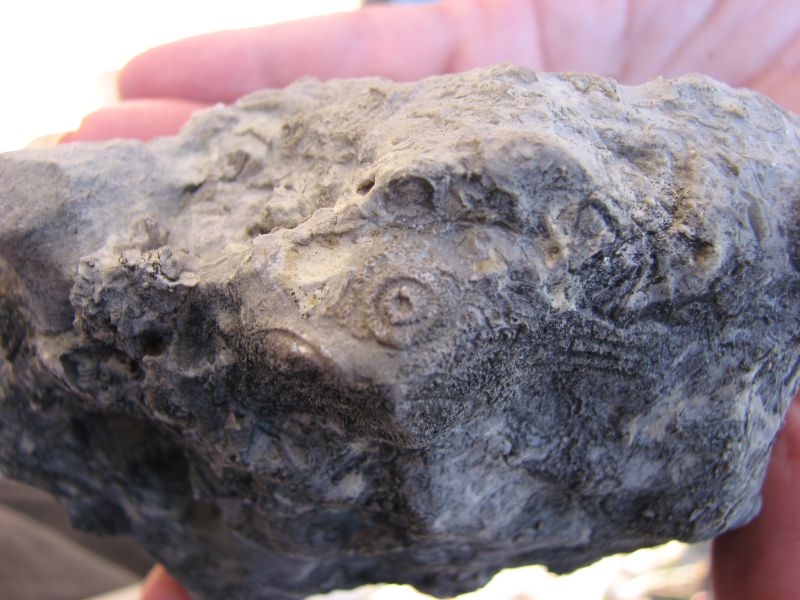
Coral.
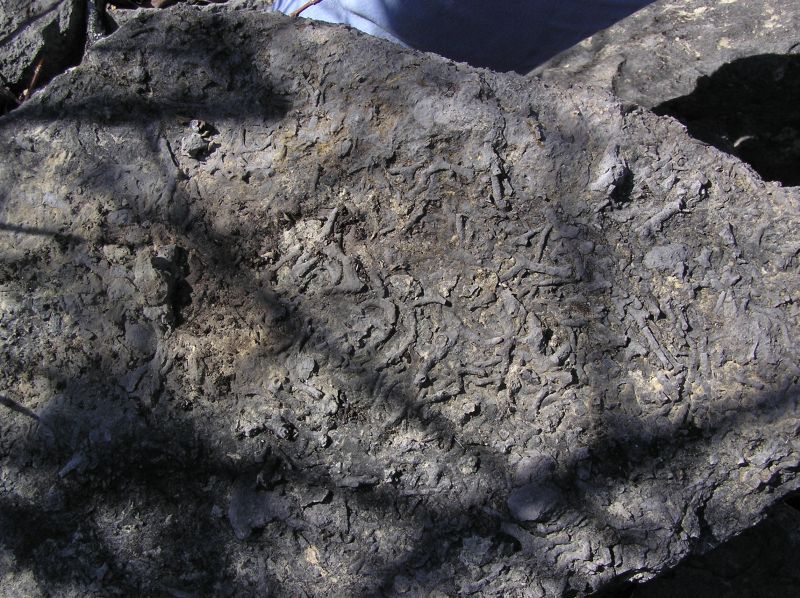
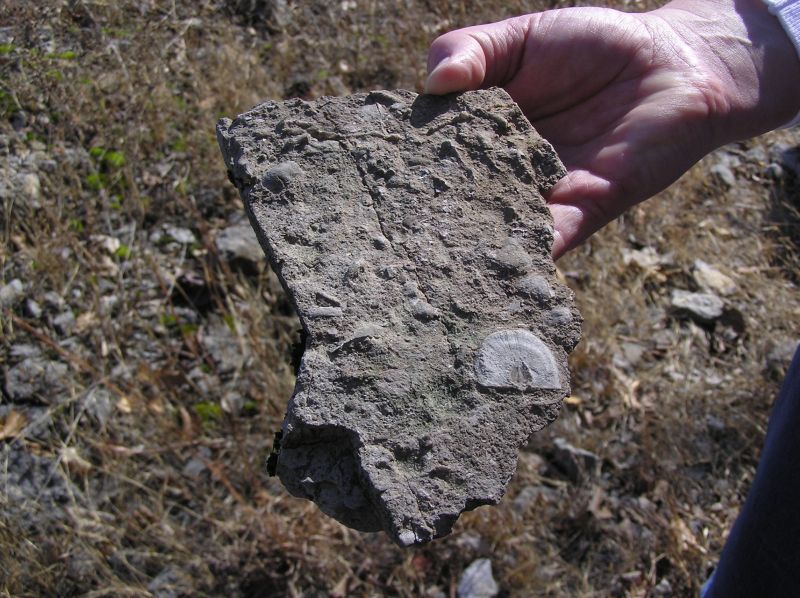
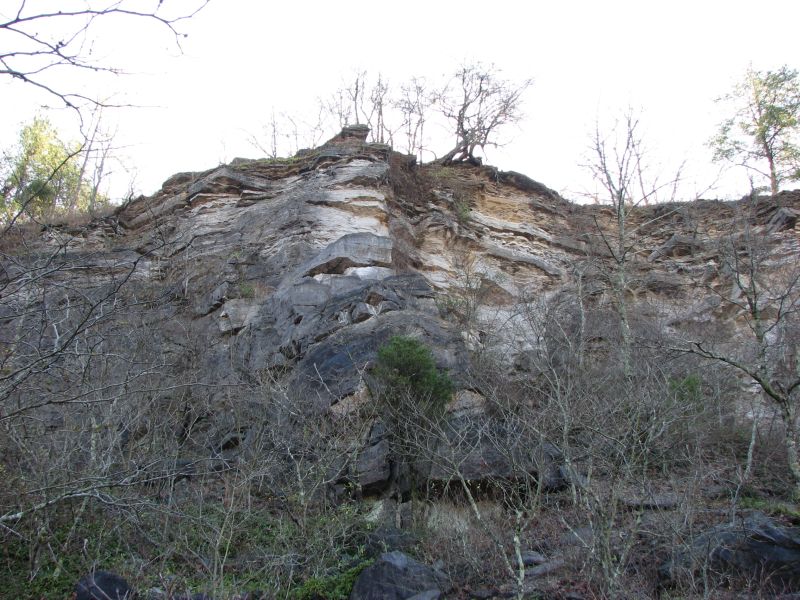
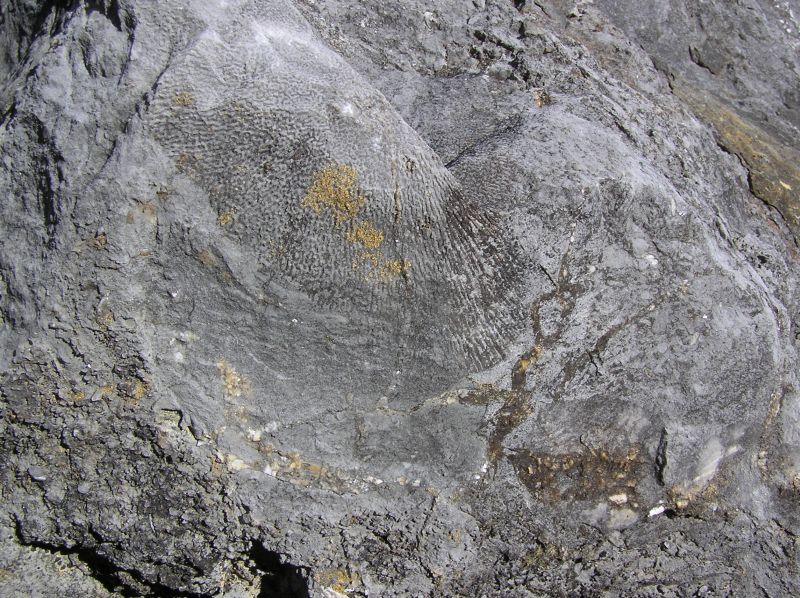
Large coral in boulder.
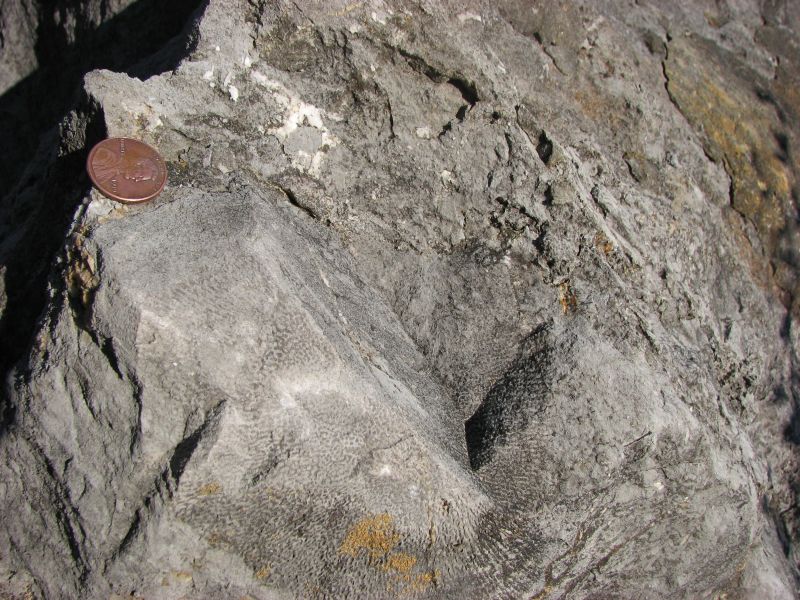
Another view of the same coral.
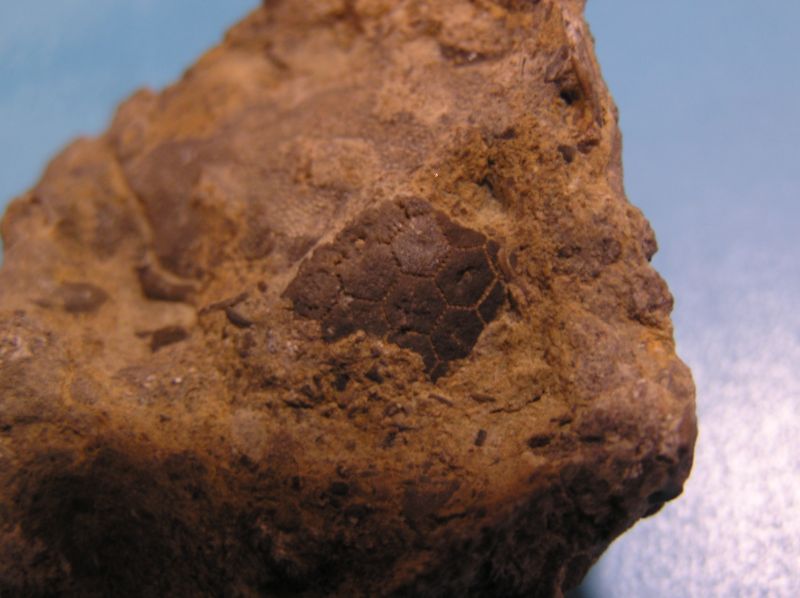
This is very tiny, no more than 1/2 inch across (My apologies for lack of a scale). Dr. Phil Novack-Gottshall says this appears to be a diploporitan, a type of echinoderm .
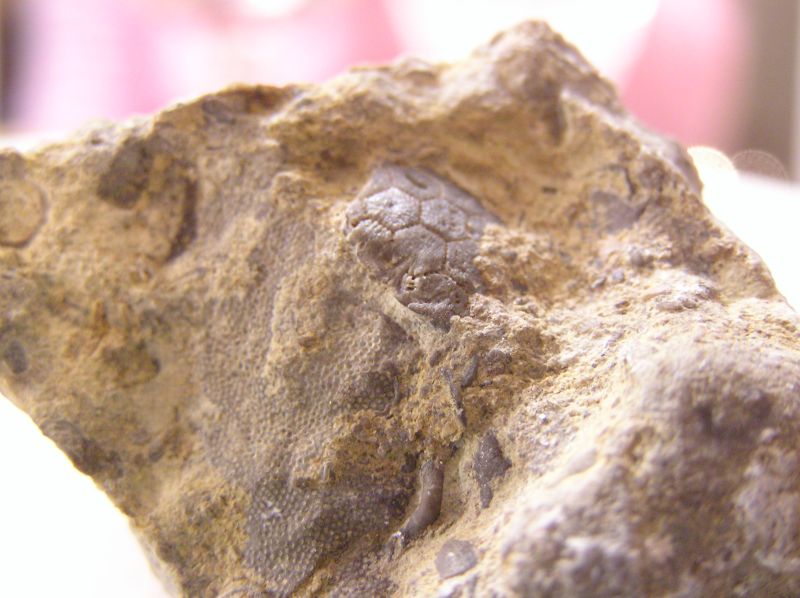
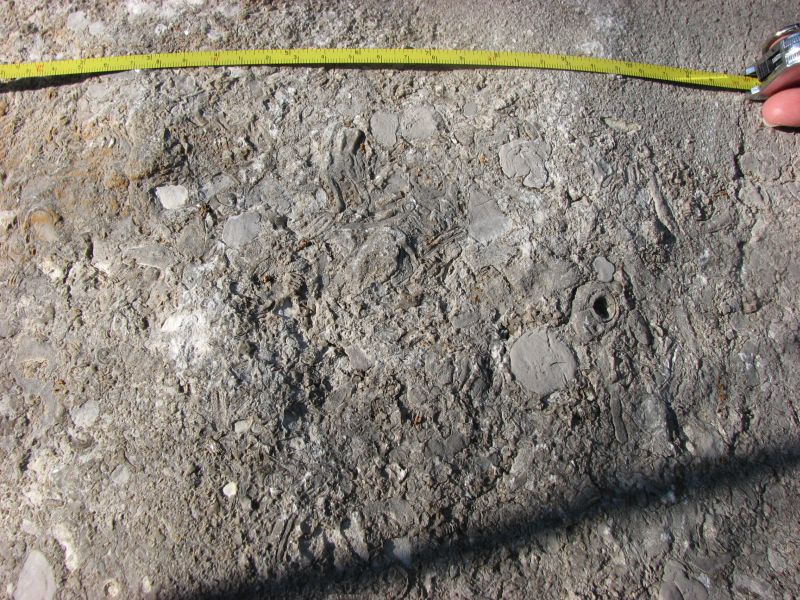
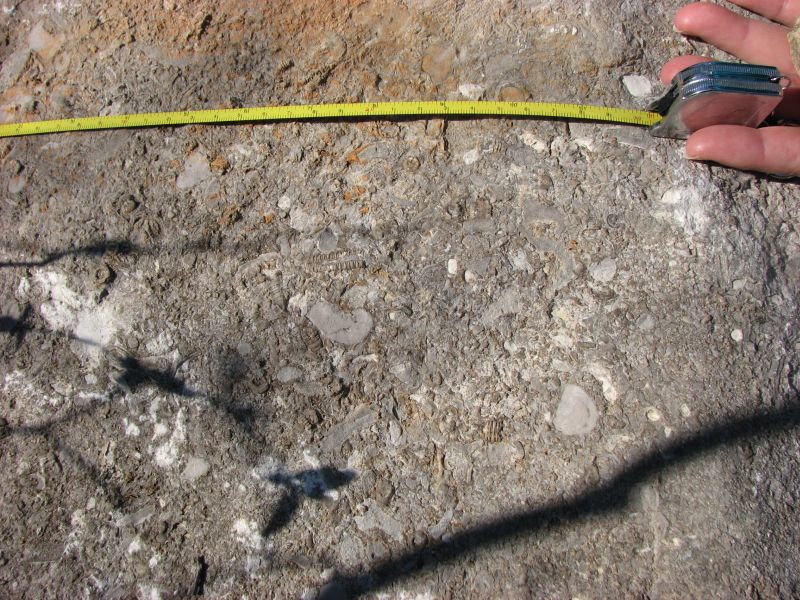
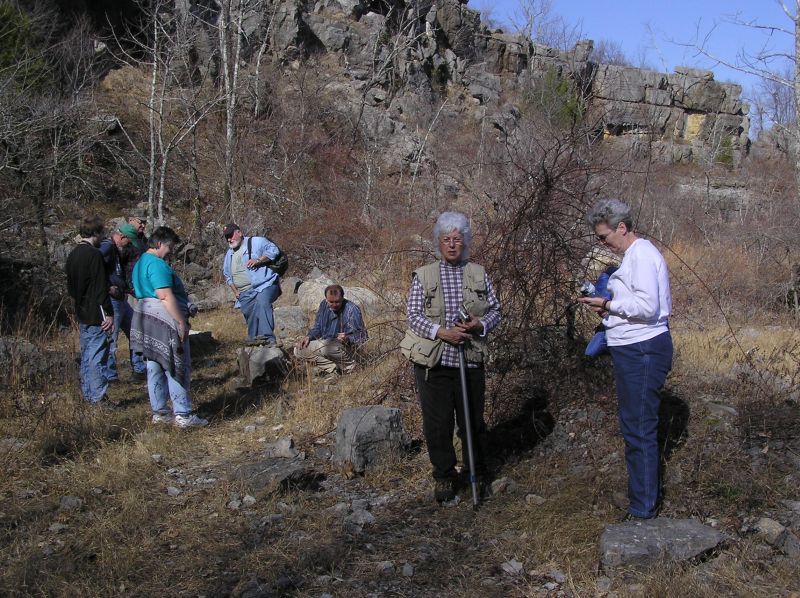
Taking a break.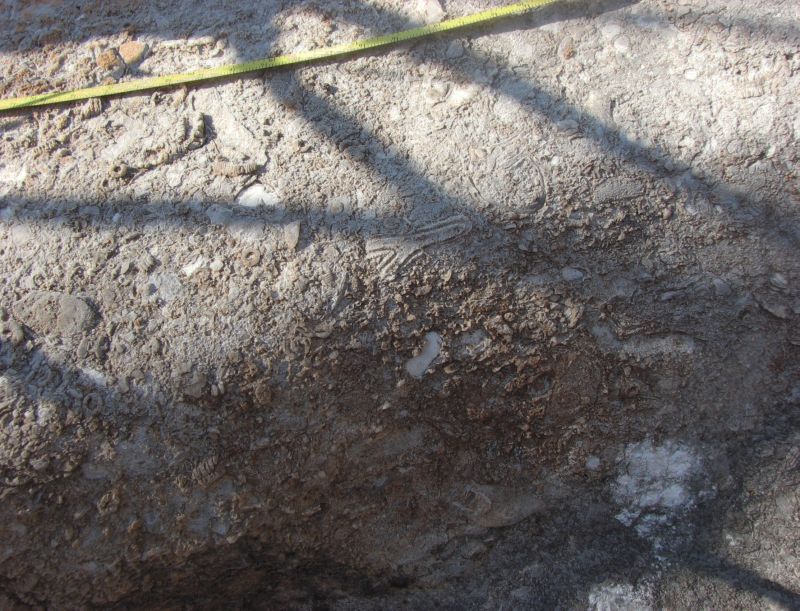

This is the rock/boulder that has been etched so that more fossil material is visible.
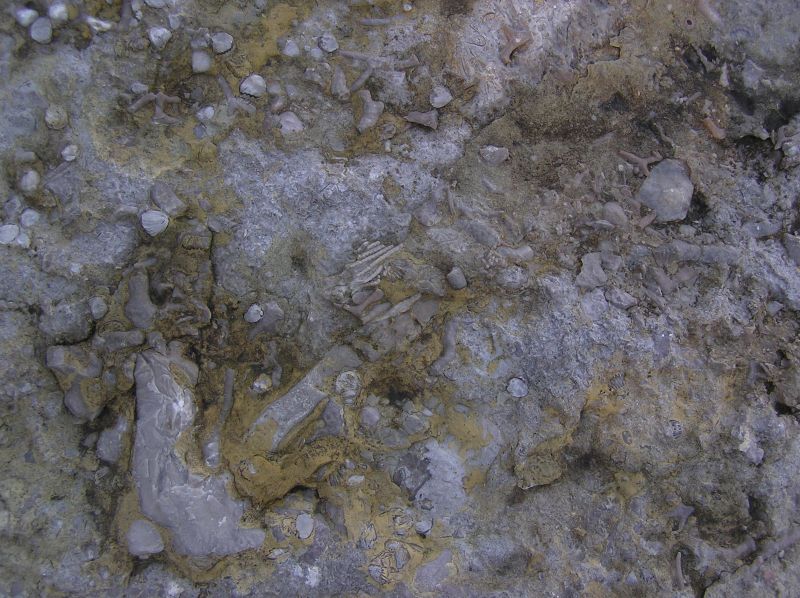
A closer view.
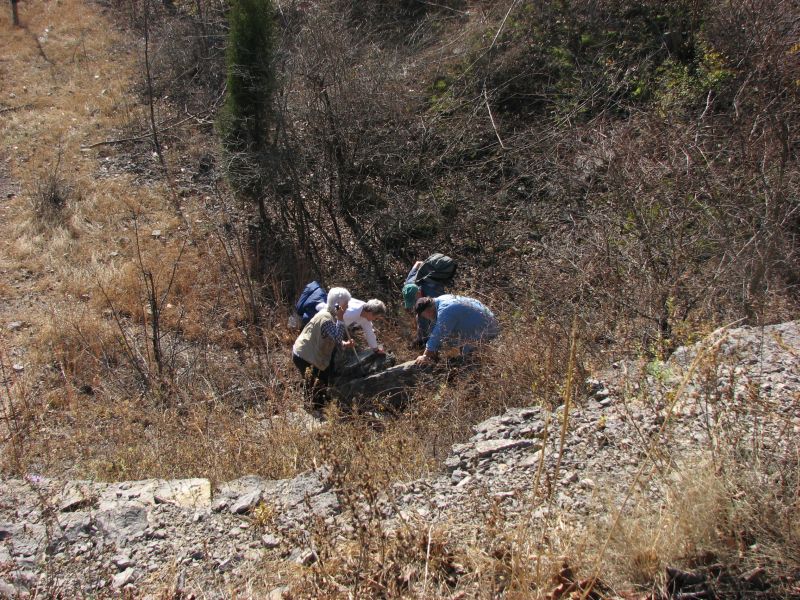
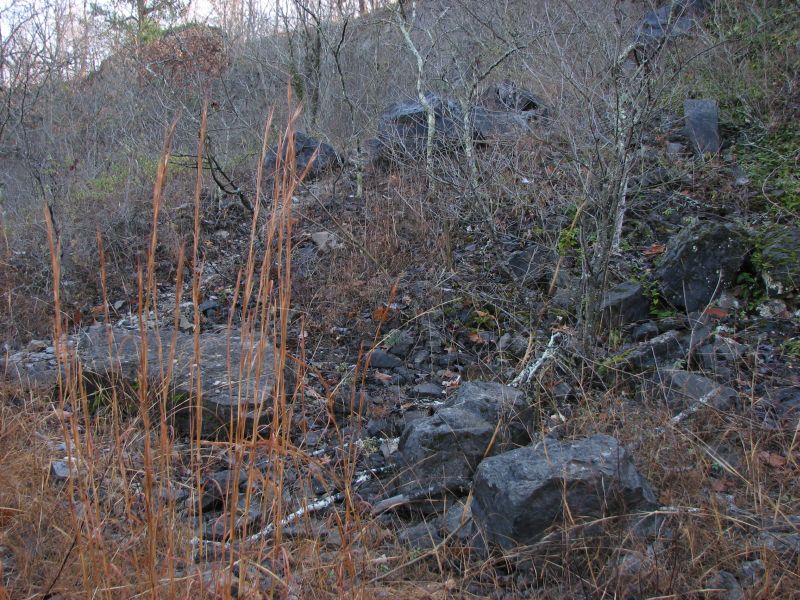
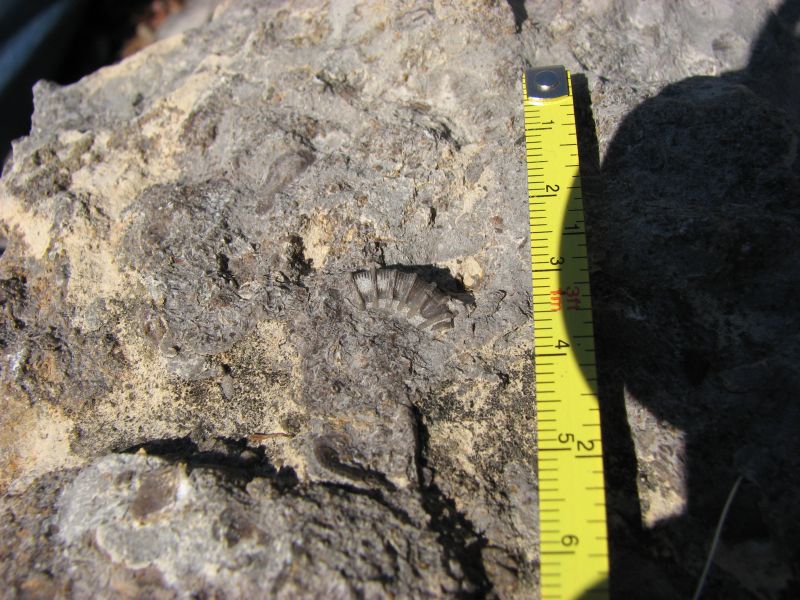
This odd looking fossil had us speculating, but according to Dr. Phil Novack-Gottshall, it is a crinoid stem with very regular cirri.
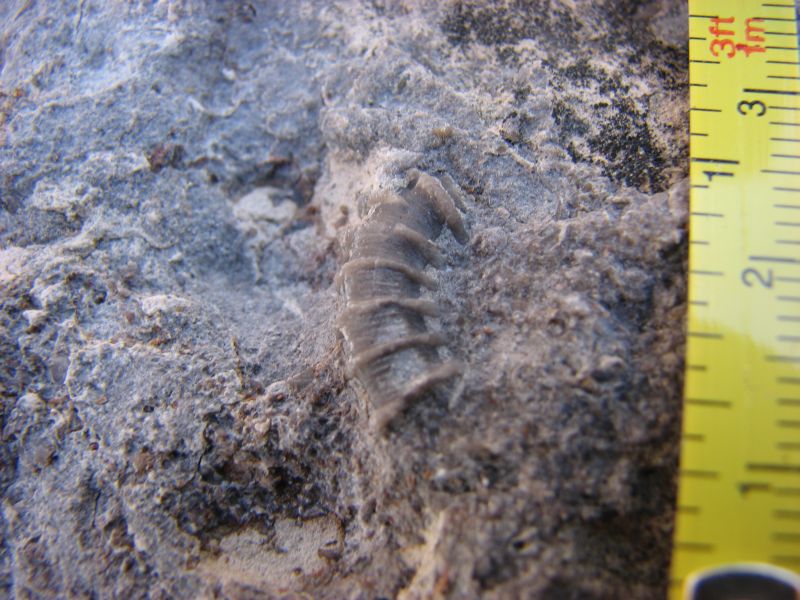
A macro view of the unusual crinoid stem.
